Structure and Function of Spine
1/117
There's no tags or description
Looks like no tags are added yet.
Name | Mastery | Learn | Test | Matching | Spaced |
|---|
No study sessions yet.
118 Terms
thoracic, sacral
What are the 2 primary curves of the spine?
HINT: kyphotic (posterior convexity)
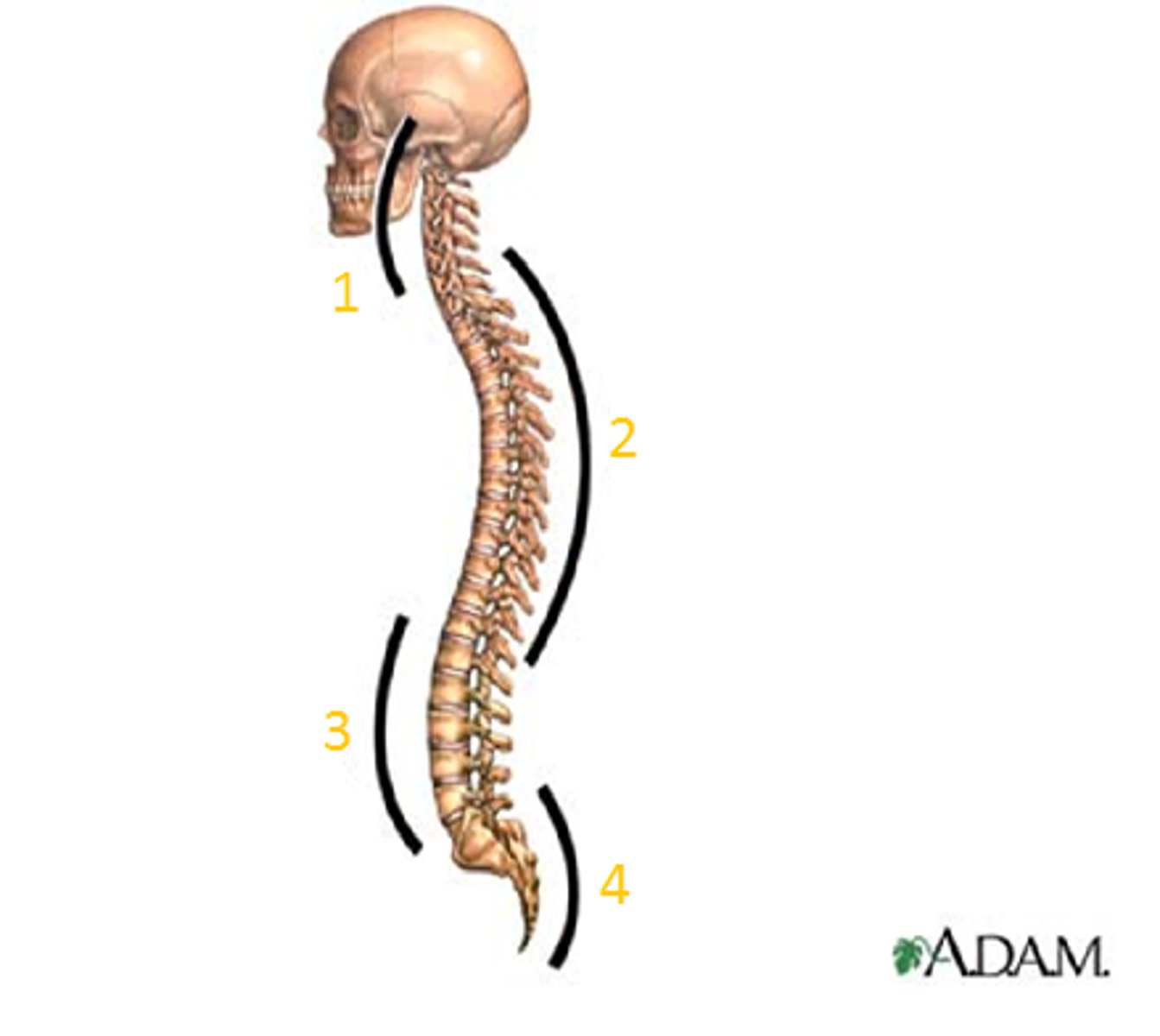
cervical, lumbar
What are the 2 secondary curves of the spine?
HINT: lordotic (posterior concavity)
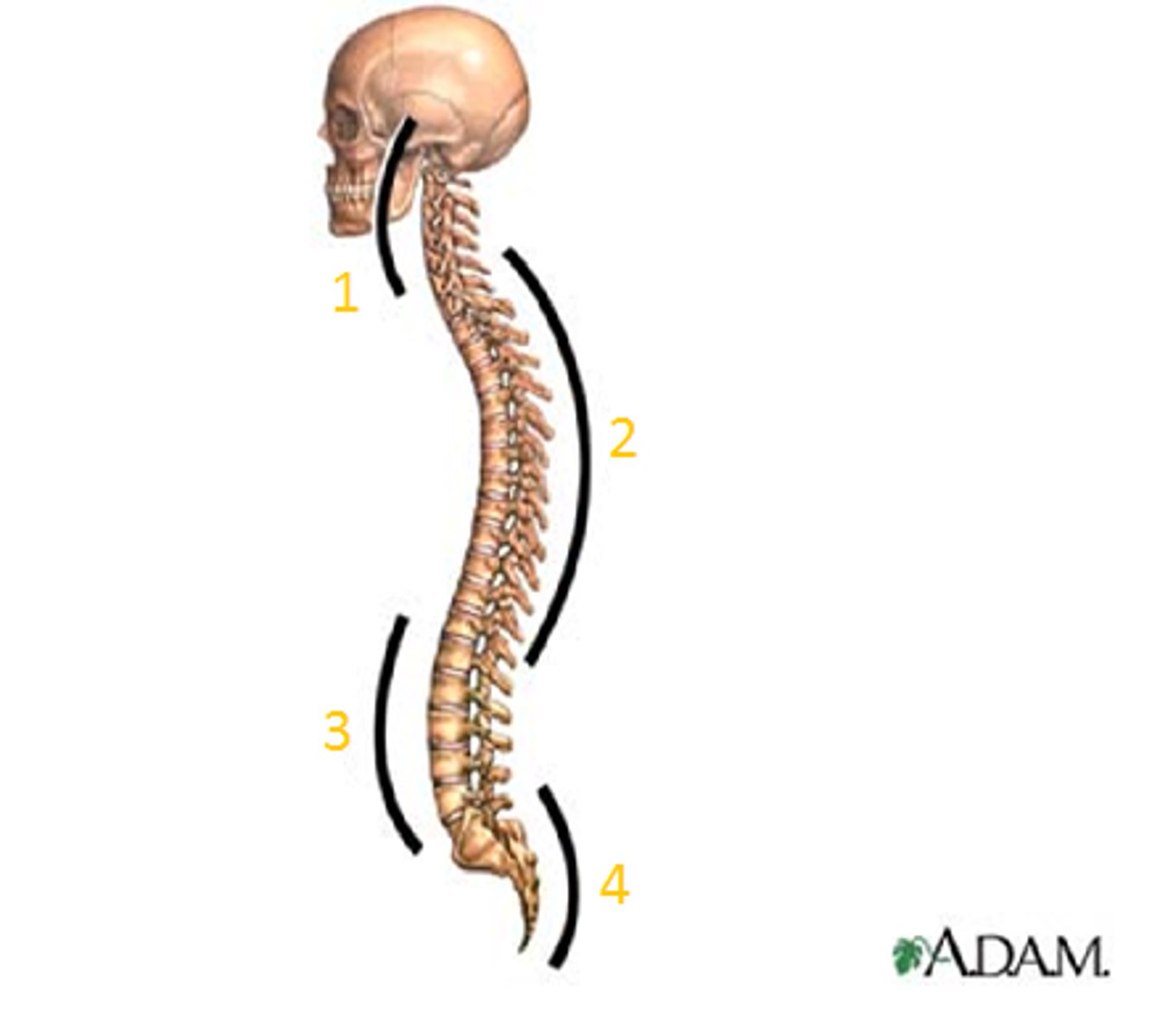
mobility
A flattened spine leads to decreased what?
HINT: protective mechanism
flexibility
An increased curvature of spine leads to increased what?
pars interarticularis
the area between the superior and inferior articulations of the vertebrae
*common site of fractures due to spondylolysis

bifid
Cervical vertebrae have a __________ spinous process.
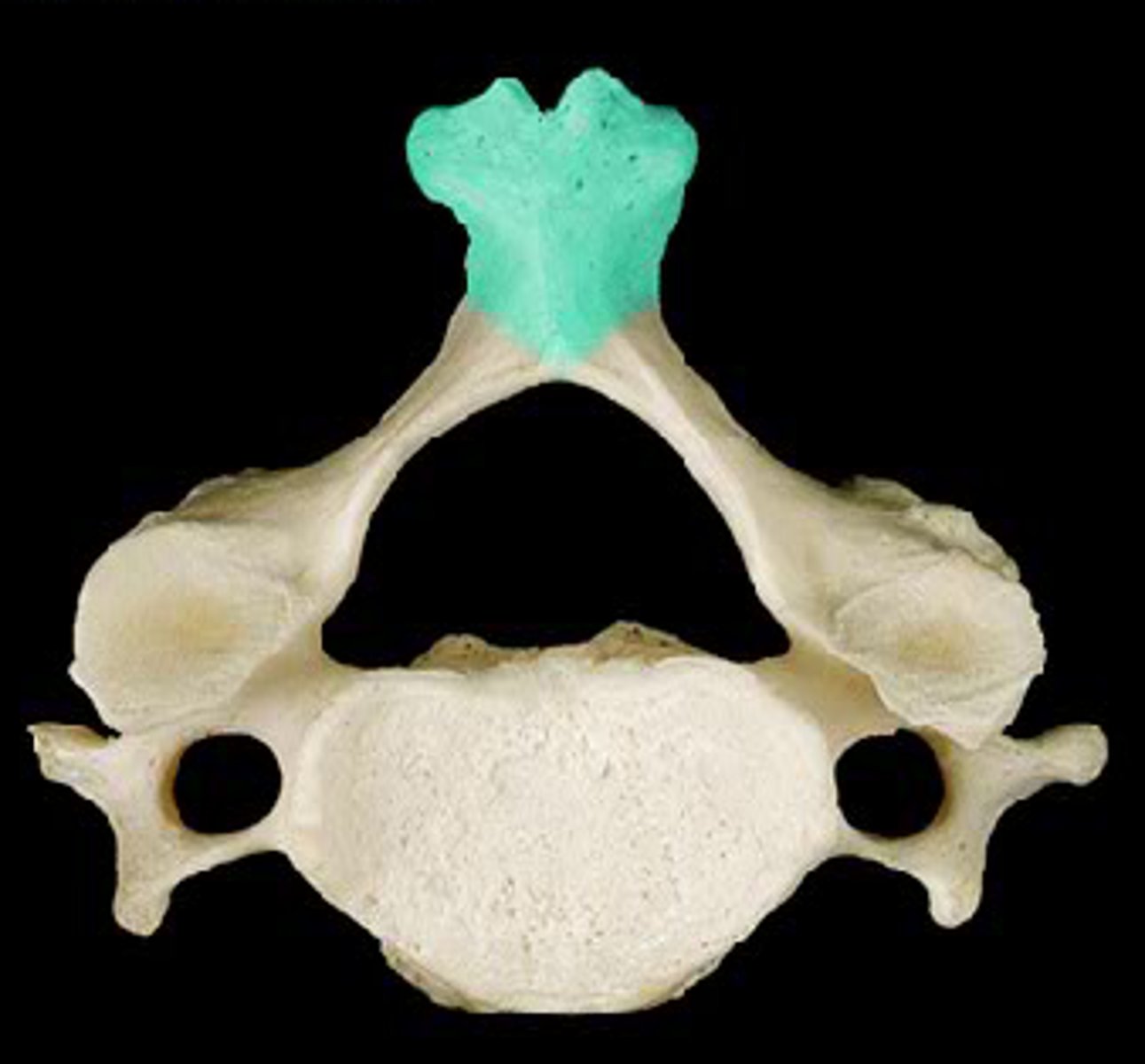
transverse foramen
only found in the cervical vertebrae and allow passage of the vertebral artery
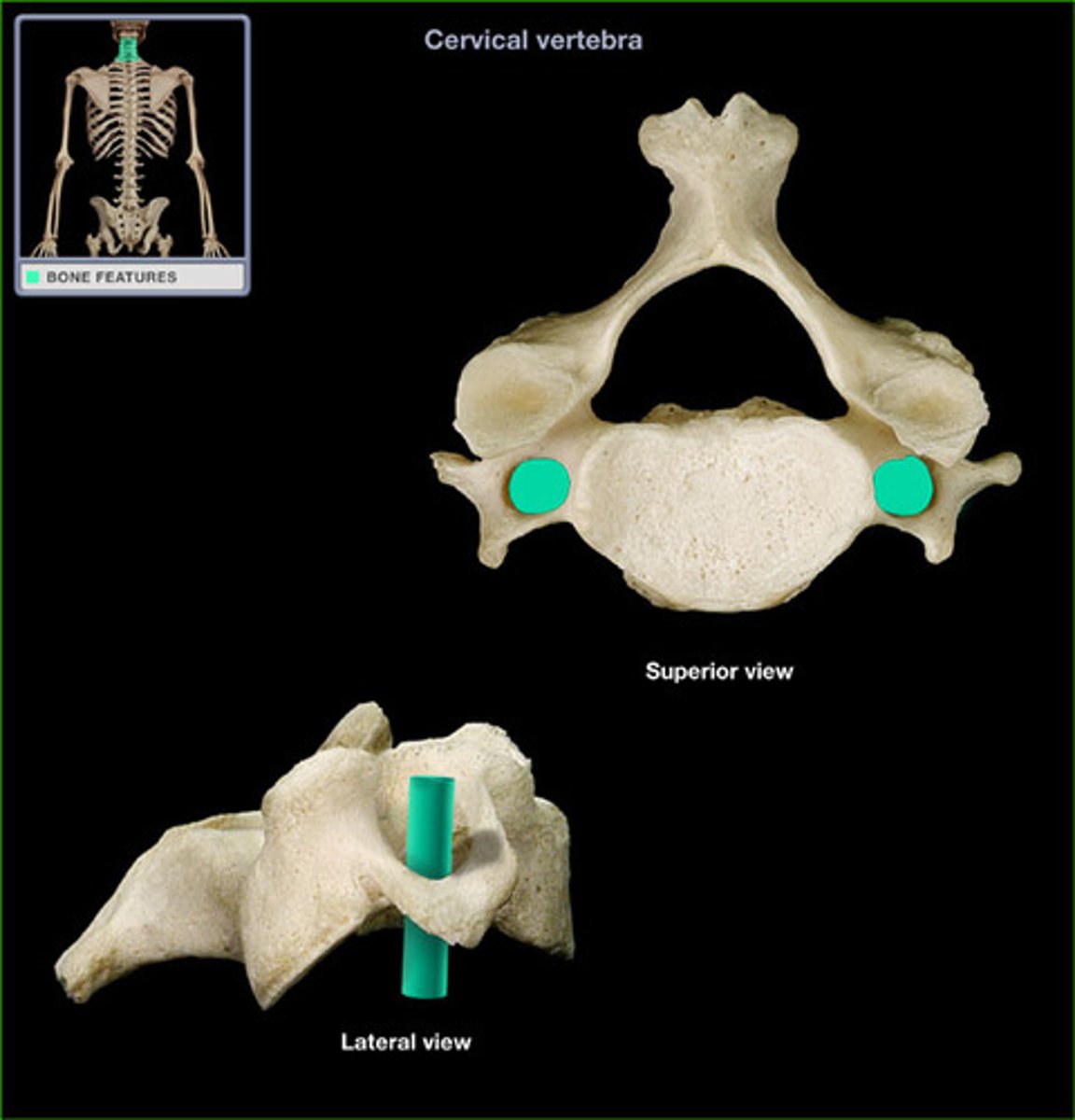
cartilaginous joints (interbody joints)
between the vertebral bodies and discs
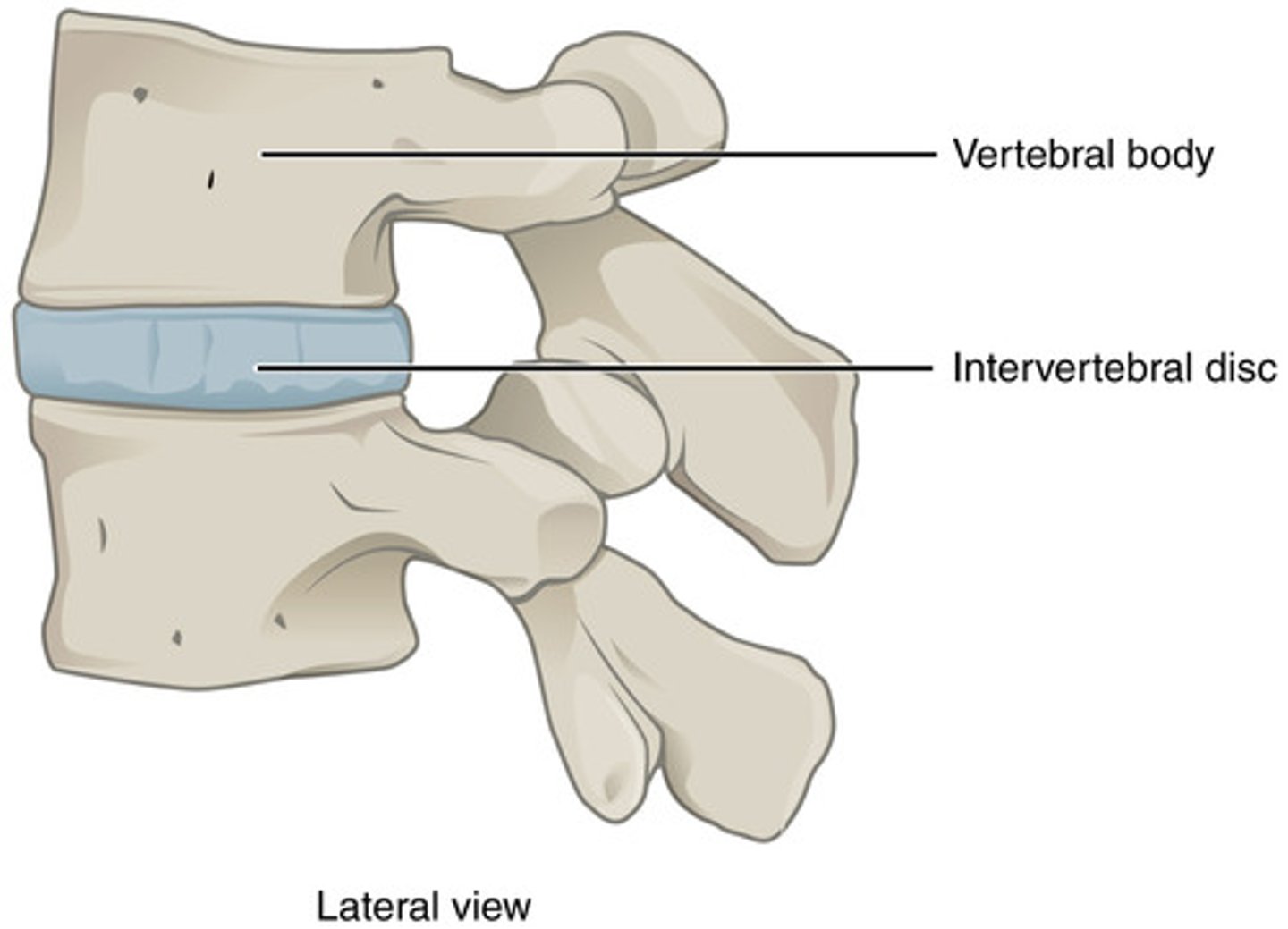
diarthrodial joints (facet joints)
plane synovial joints with joint capsule present
*formed by superior articulating surface of the lower segment and the inferior articulating surface of the upper segment
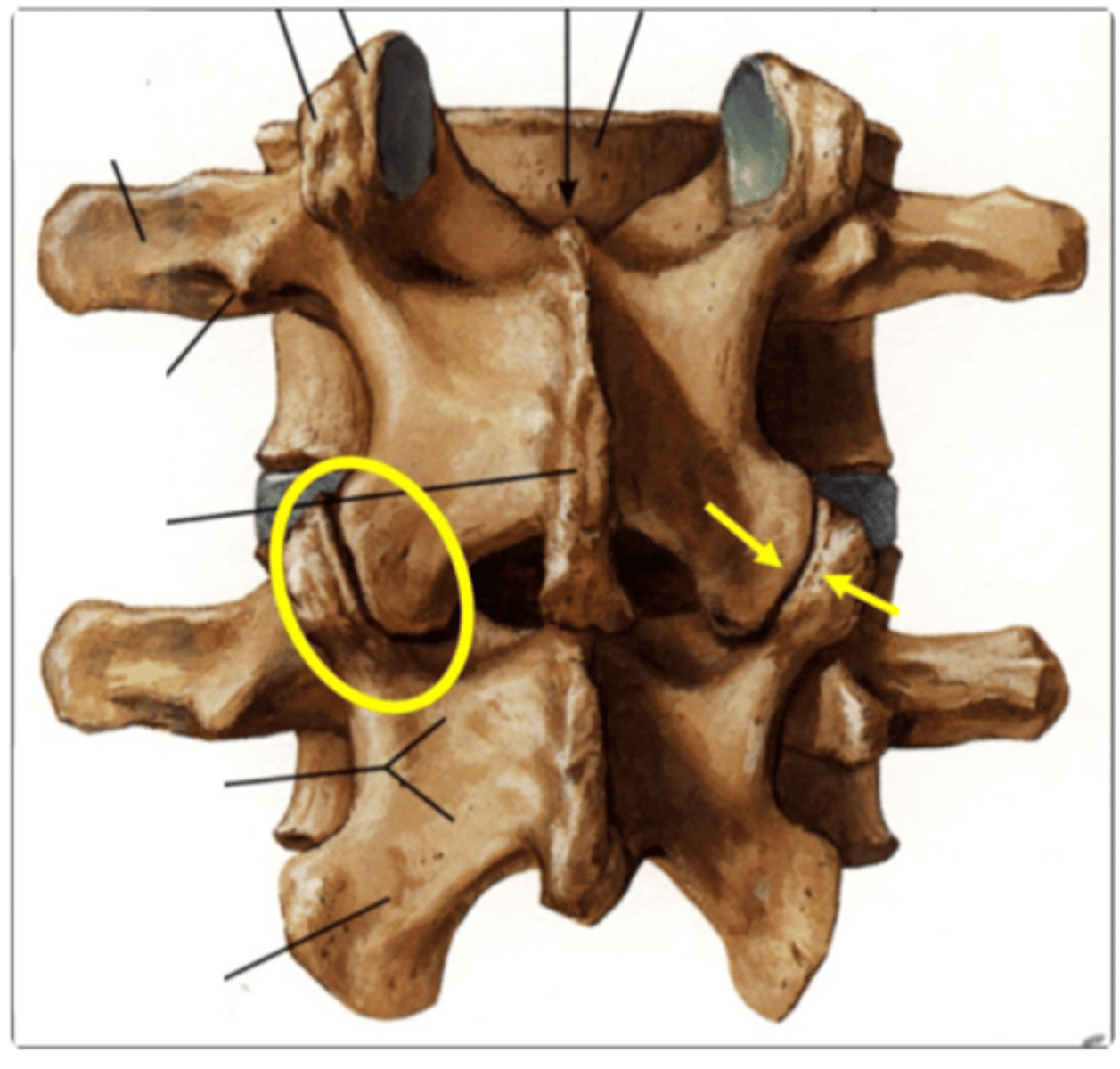
intervertebral disc
mass of fibrocartilage between adjacent vertebrae that acts as a shock absorber and spacer beginning at C2
*makes up 20-30% of the height of the column
**thickness varies and increases as you go down the spine
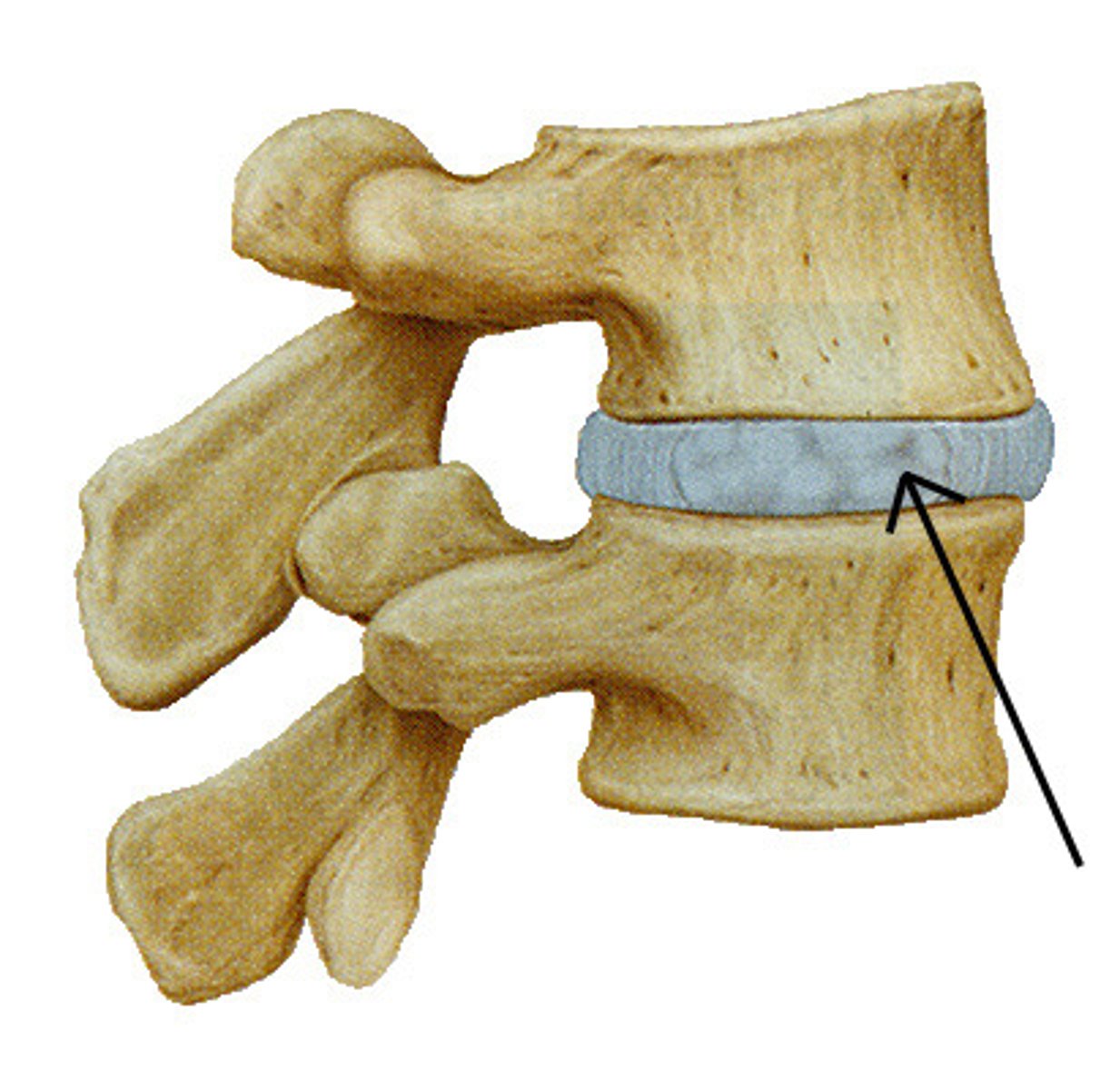
nucleus pulposus, annulus fibrosus
What are the 2 parts of the intervertebral disc?
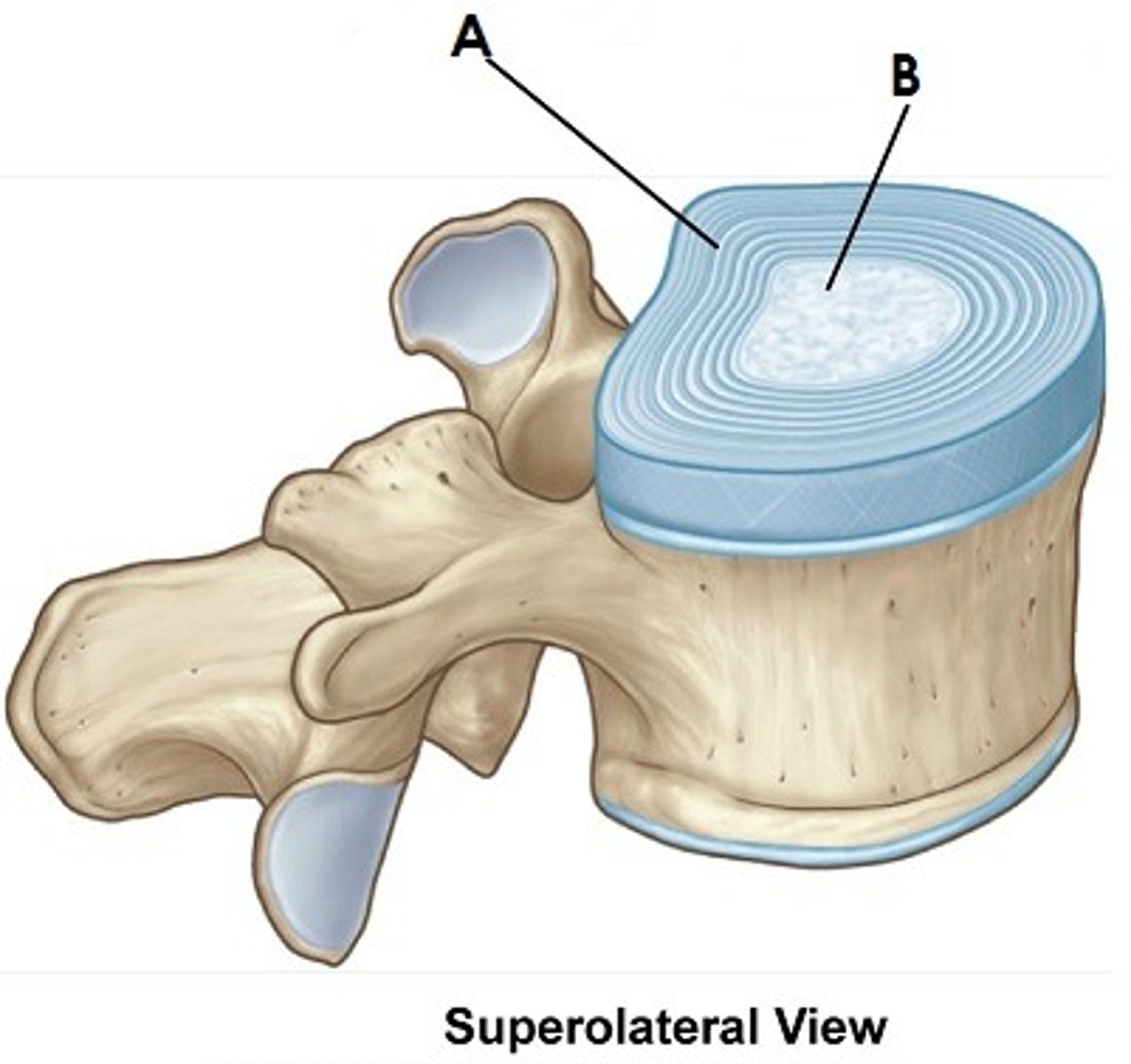
disc thickness, body height
The ratio between what 2 things determines the available motion at a particular spine segment?
cervical
Which spine segment has the most motion?
thoracic
Which spine segment has the least motion?
hyaline cartilage
What is located between each vertebral body and intervertebral disc?
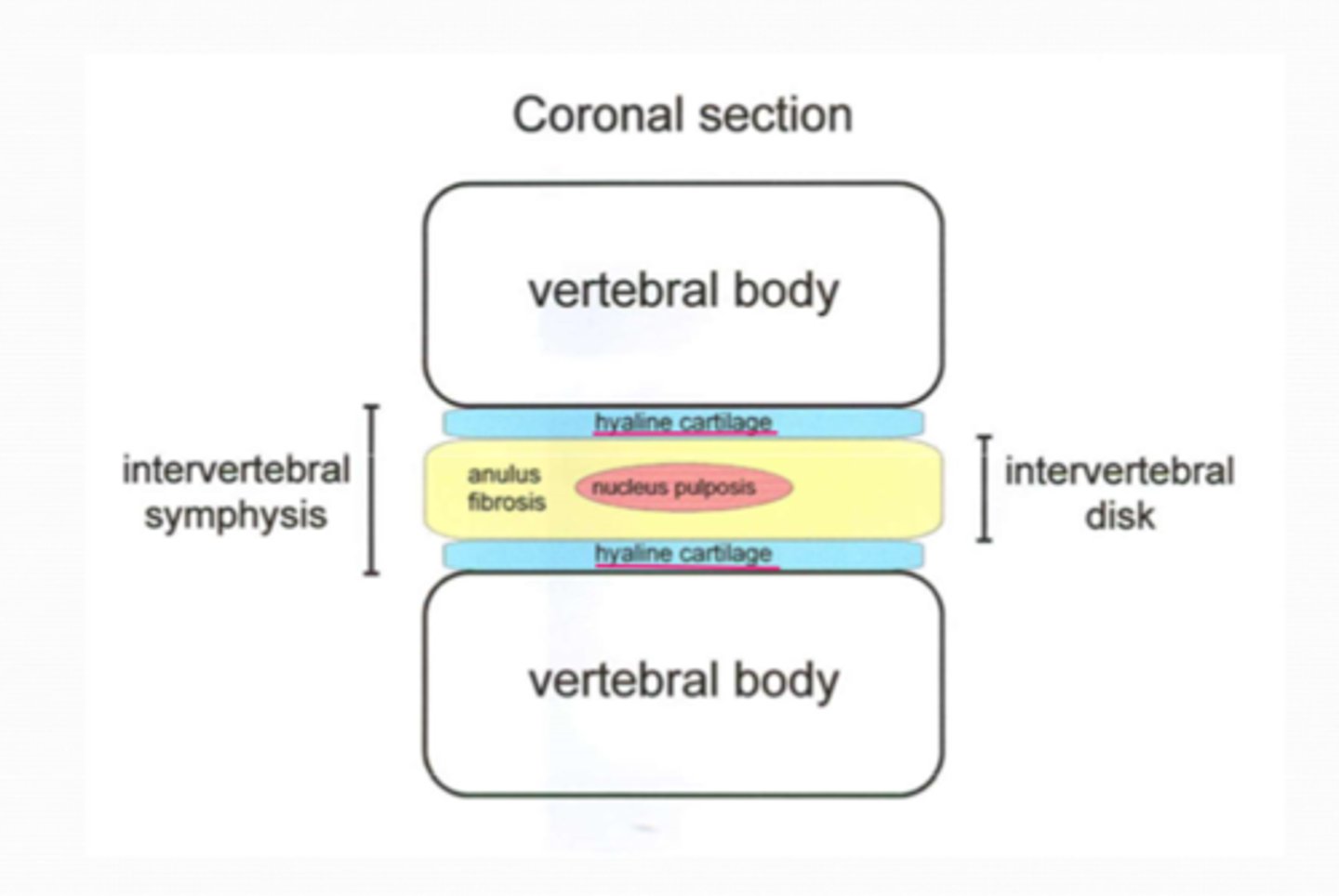
nucleus pulposus
inner gelatinous mass that gives the disc its elasticity and compressibility
*70-90% water
**compression throughout the day forces the water out (shorter at night than in morning)
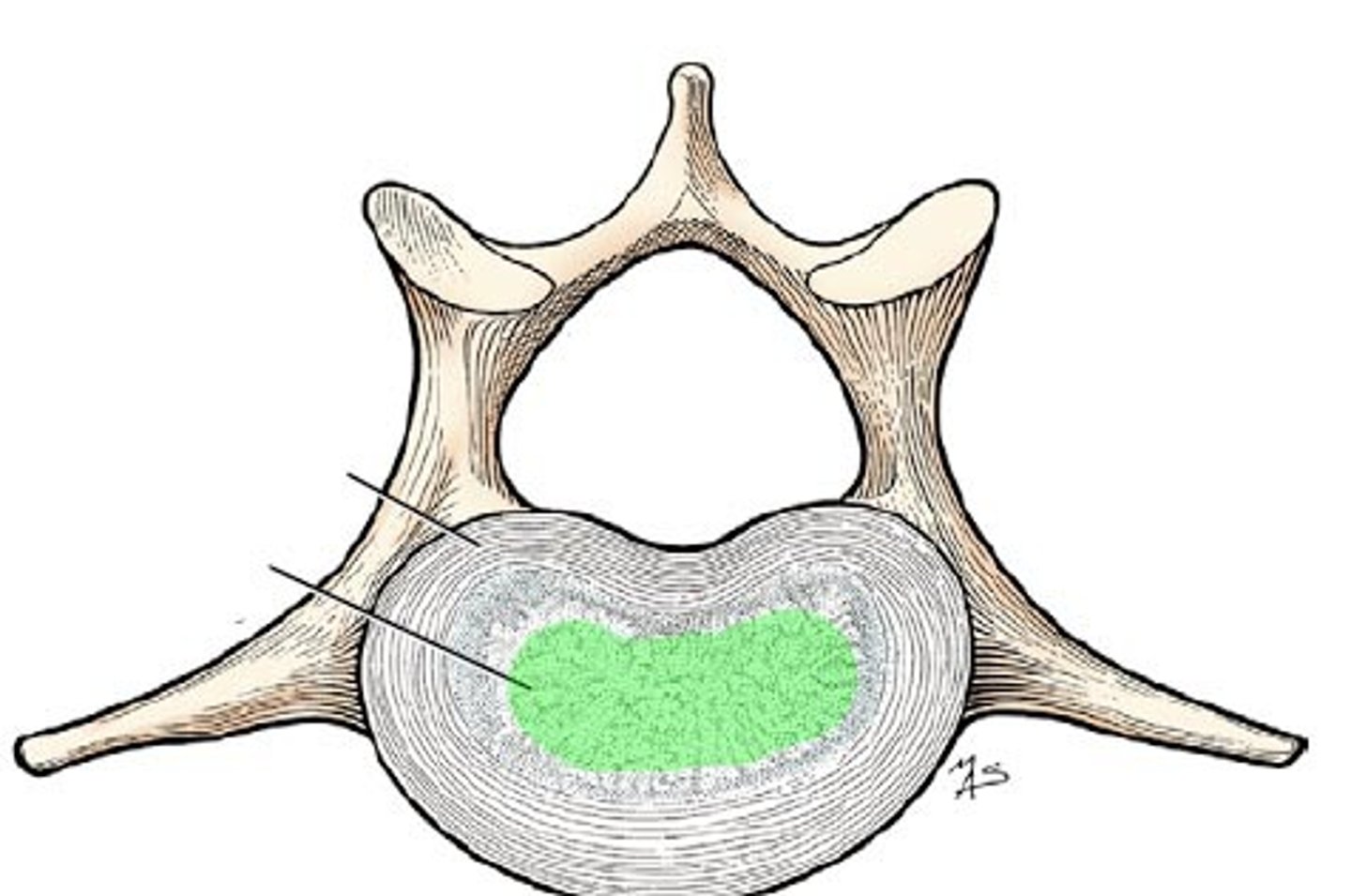
compressive
Hydration of the vertebral disc will decrease with ___________________ loading.
mechanical function
The loss of hydration of the IV disc during compressive loading decreases its __________________ ________________.
HINT: less mobility
annulus fibrosus
outer ring of fibrocartilage that surrounds nucleus pulposus
*mostly avascular and aneural (except very outermost layers)
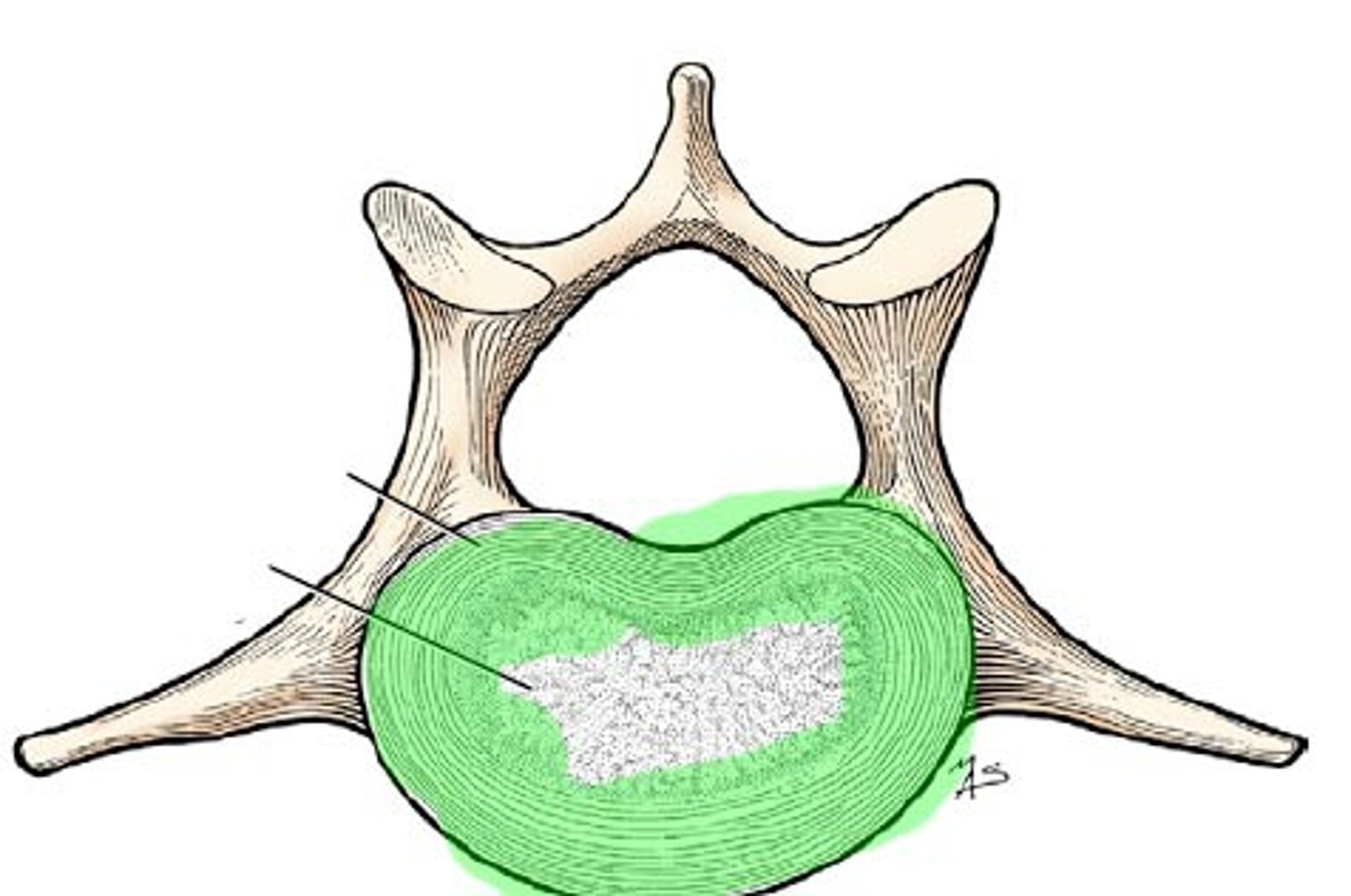
anteriorly
The annulus fibrosus is thickest in which direction?
Sharpey's fibers
connect periosteum to compact bone
*outermost 1/3 annulus fibrosus connects to vertebral body via these
endplates
deformate cartilage plate at the top and bottom of vertebrae
*thin in adults, thick at birth and function as growth plates for the vertebrae in children
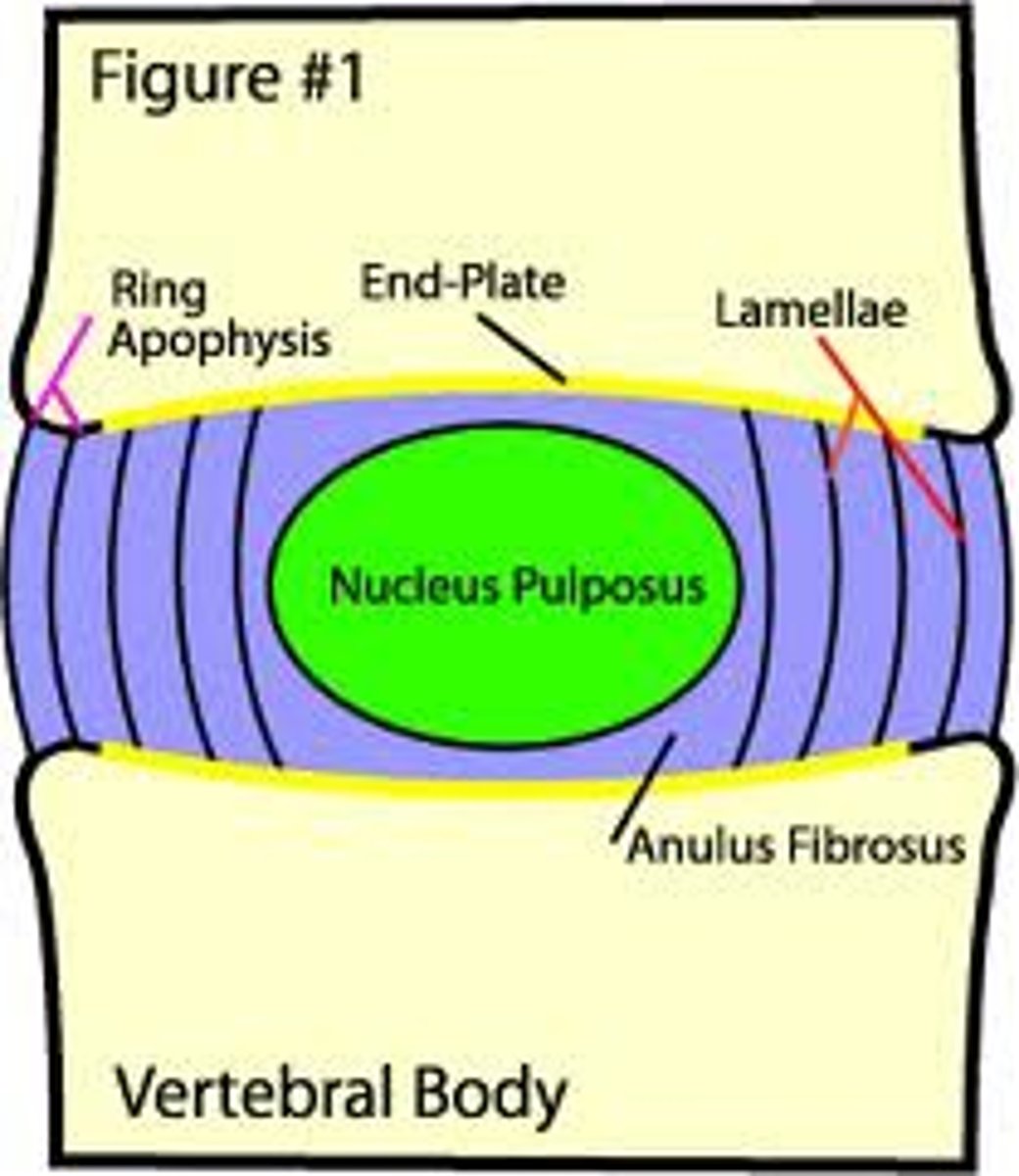
collagen fibers
Annulus fibrosus consists of 15-25 concentric rings of ________________ ___________.
tensile
The annulus fibrosus is designed to resist _____________ forces.
compressive, tensile
____________________ stresses on the disc (hydrostatic pressure) translate into ______________ stresses in the annulus fibrosis.

stability
The translation of compressive to tensile stress makes the disc stiffer which adds ________________ and supports the spine.
endplate
Because the disc is avascular, nutrition diffusion occurs through what?
HINT: via compressive forces
facet orientation
1. determines amount of motion (gliding and rotation)
2. protects the disc from shear forces
occipito-atlantal joint
convex occiput with concave C1
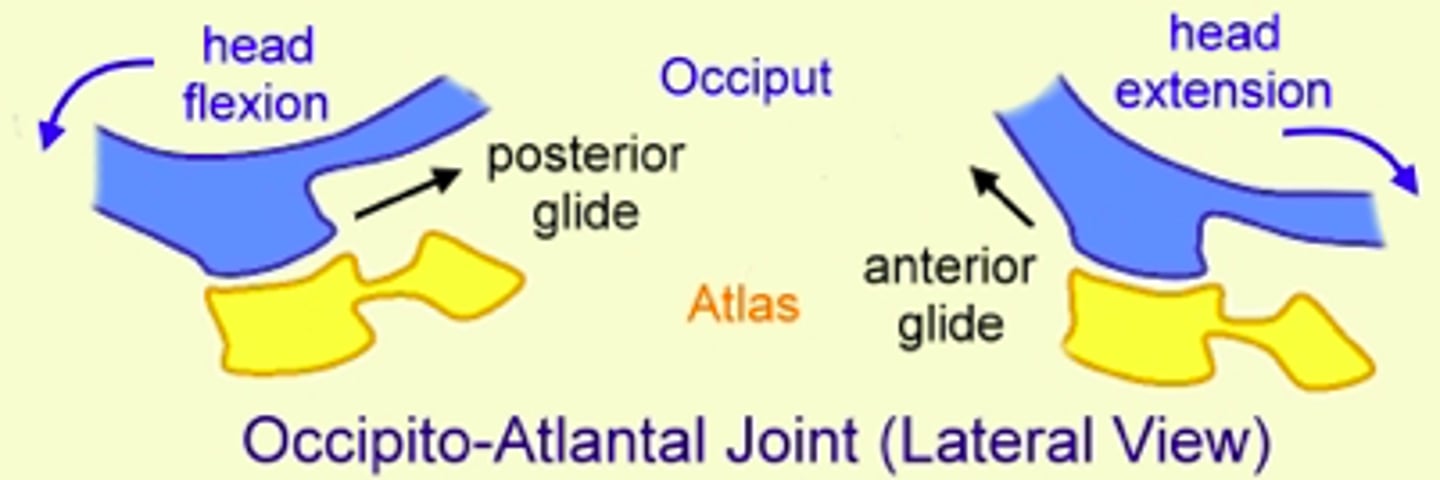
atlantoaxial joint
pivot joint (C1-C2)
*facet orientation parallel to the transverse plane
**primary motion is rotation
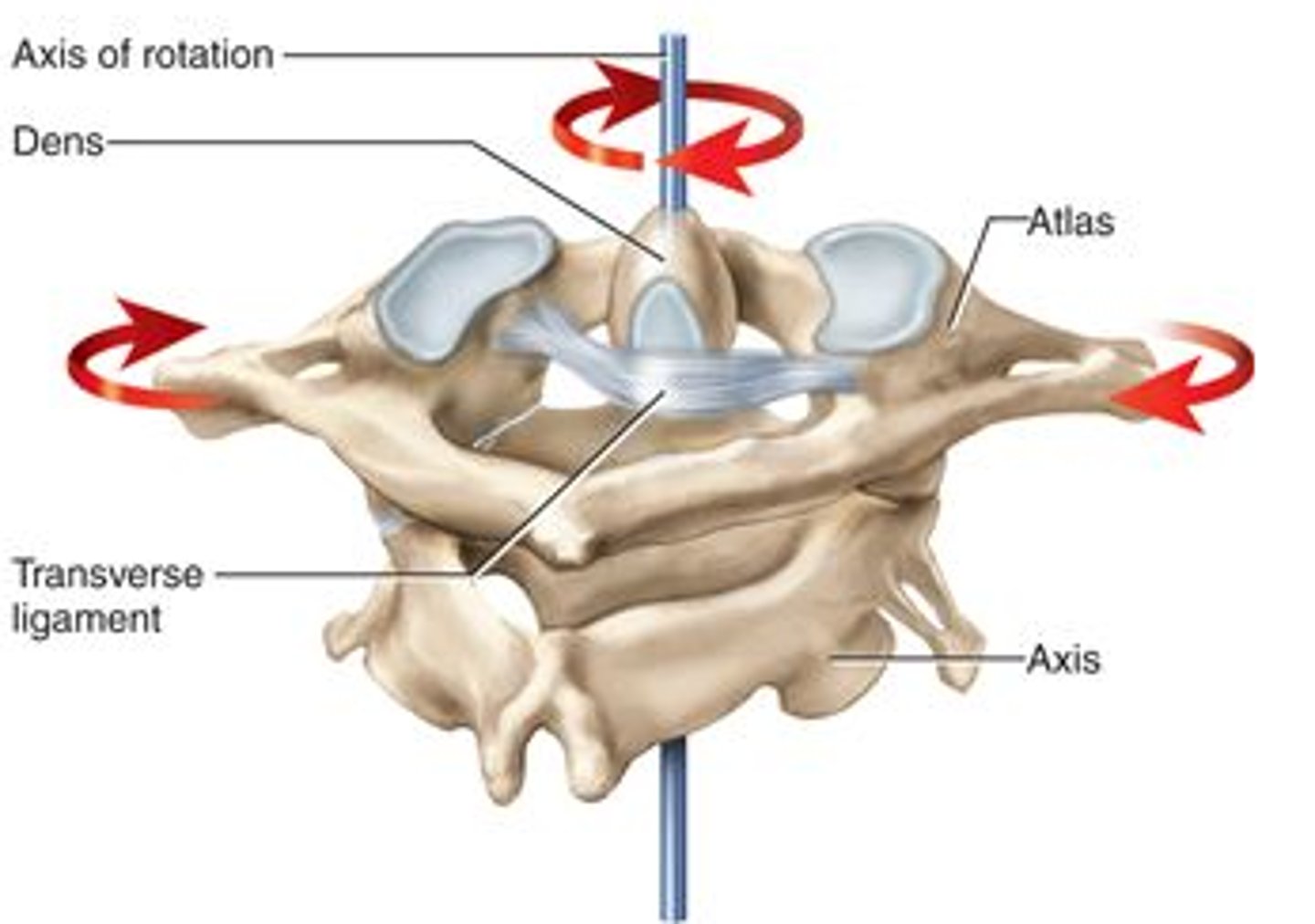
C2-C7 facet orientation
45 degree angle to the transverse plane
*parallel to frontal plane
inferior facet of upper--> faces inferior, anterior, slightly lateral
superior facet of lower--> faces superior, posterior, and slightly medial
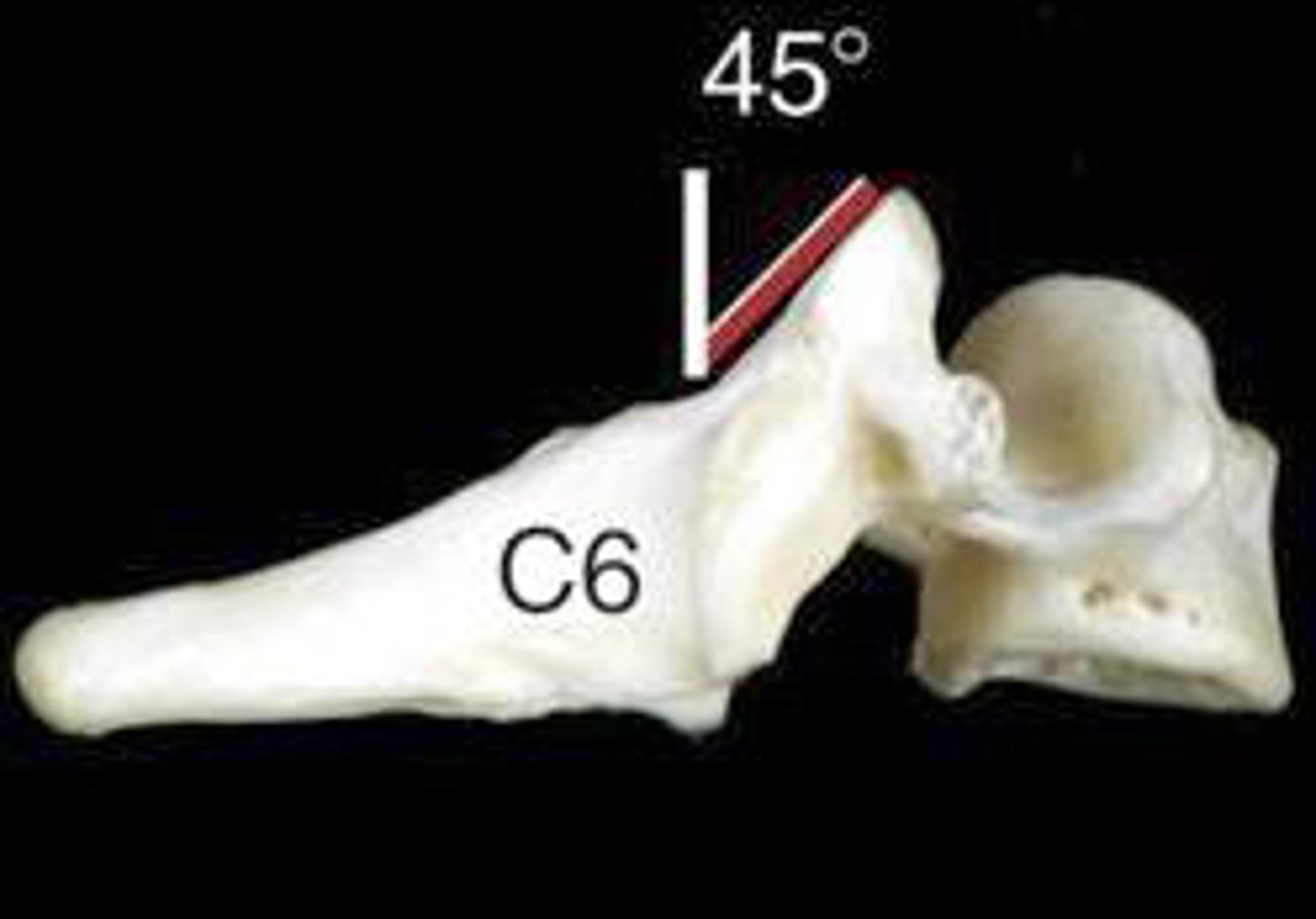
inferior, anterior, lateral
In CERVICAL SPINE, the inferior facet of upper segment faces _____________, ____________, slightly ___________.

superior, posterior, medial
In CERVICAL SPINE, the superior facet of lower segment faces ______________, ______________, and slightly ___________.
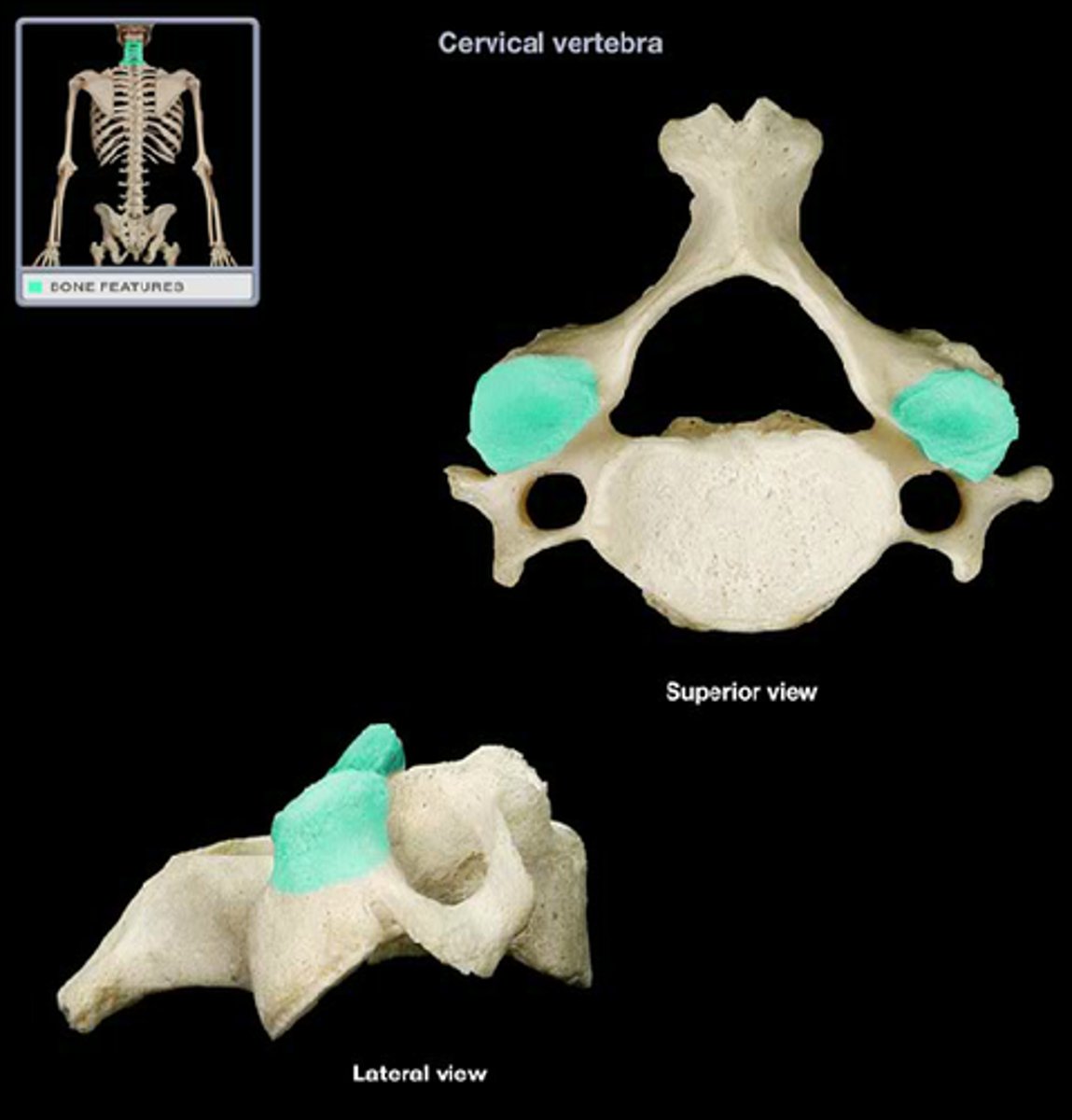
thoracic spine facet orientation
60 degrees to transverse plane, 20 degrees to frontal plane
*primarily lateral flexion
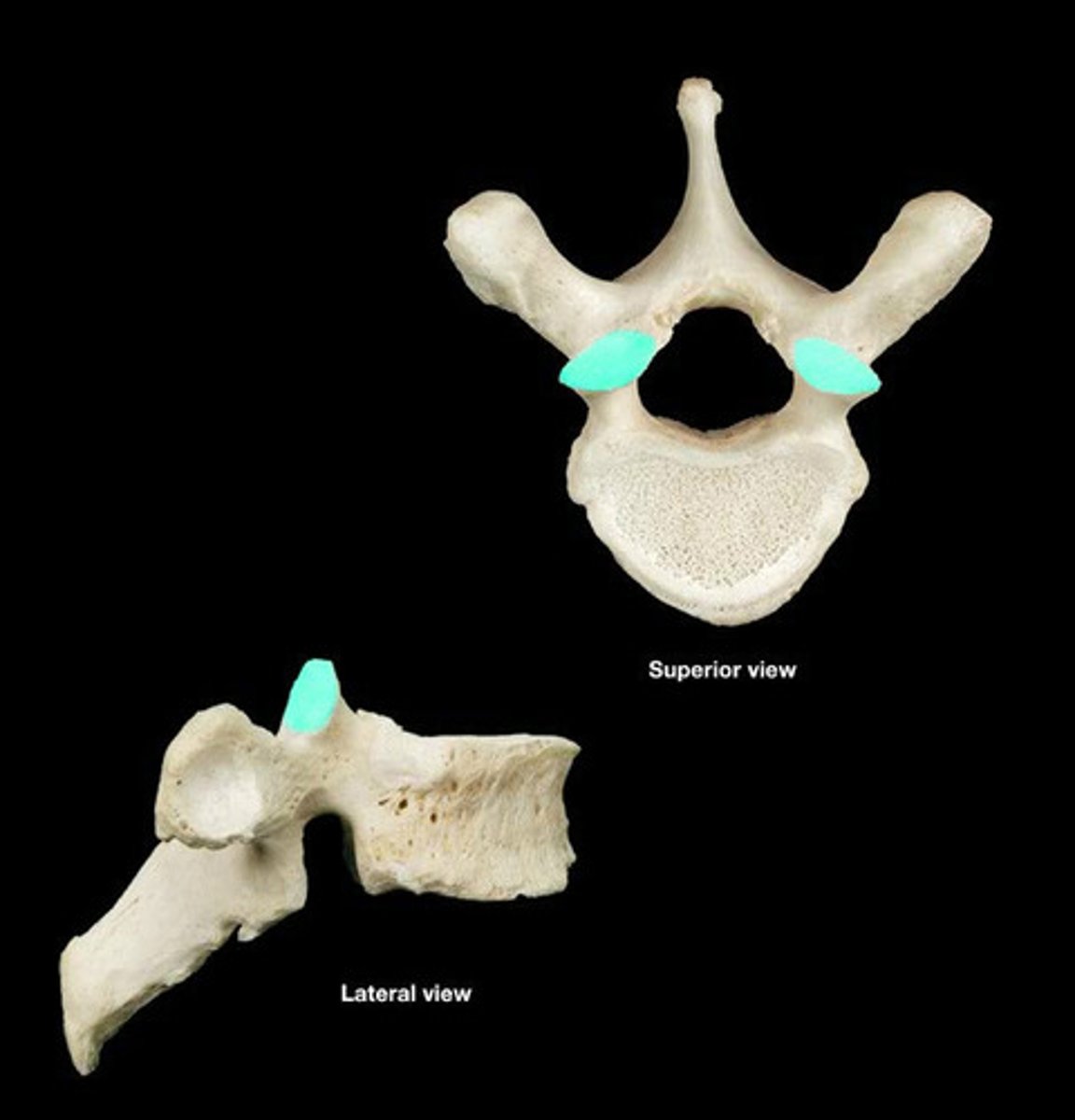
lumbar spine facet orientation
90 degrees to transverse plane, 45 degrees to frontal plane
inferior facet--> faces lateral, slightly anterior
superior facet--> faces medial, slightly posterior
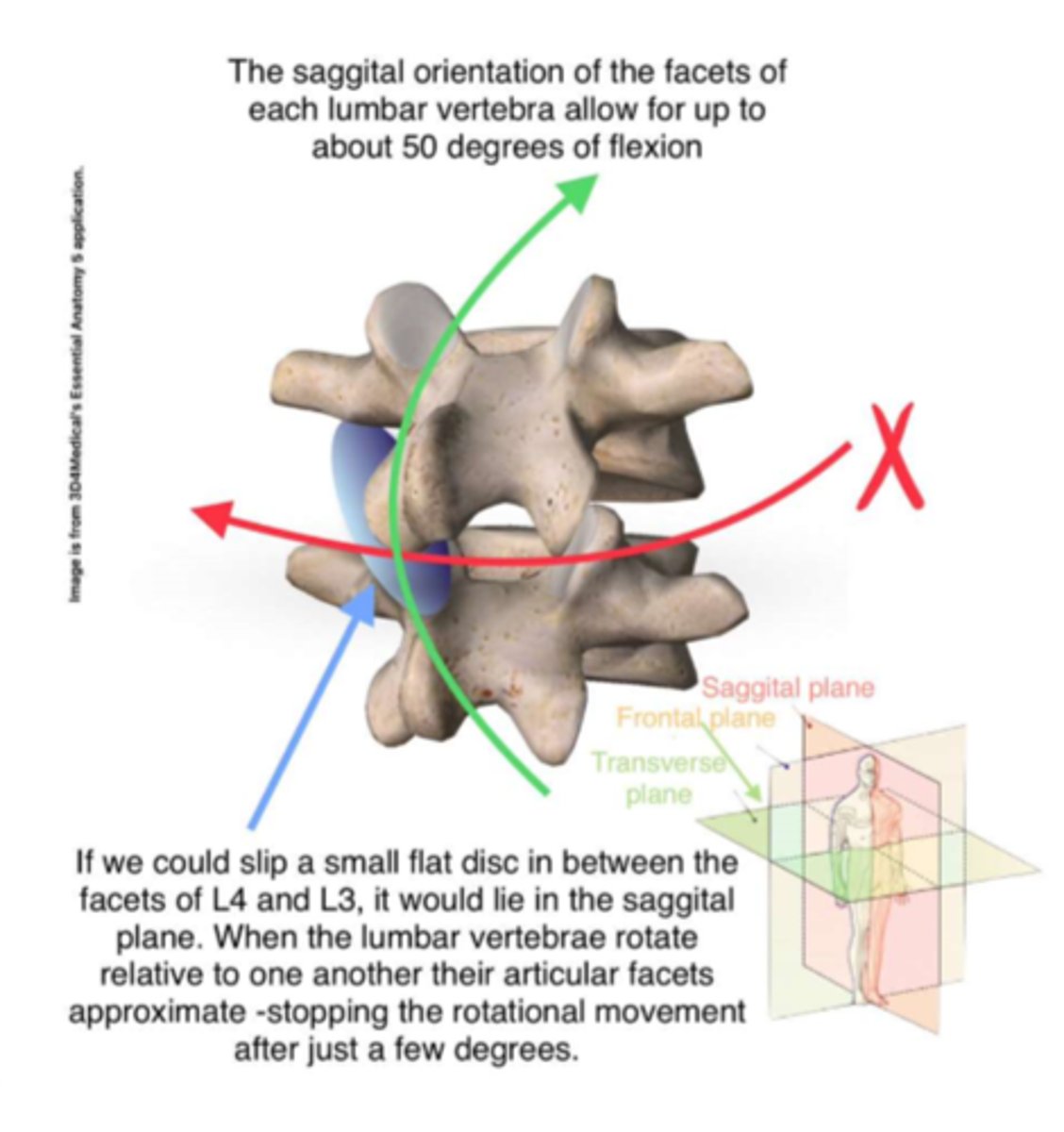
medial, posterior
In LUMBAR SPINE, the superior facet of lower segment faces _____________ and slightly ______________.
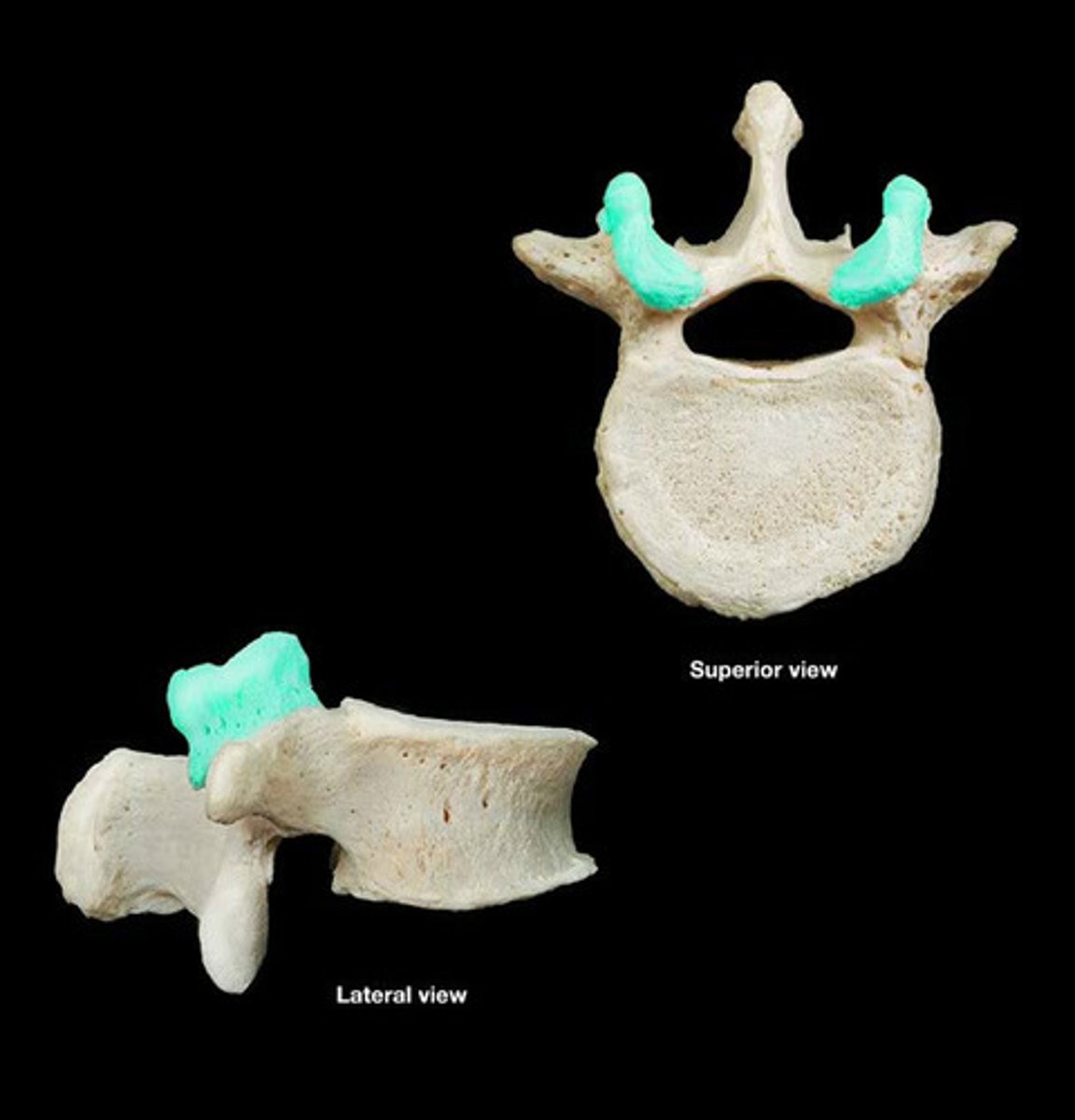
lateral, anterior
In LUMBAR SPINE, the inferior facet of upper segment faces _____________ and slightly ______________.
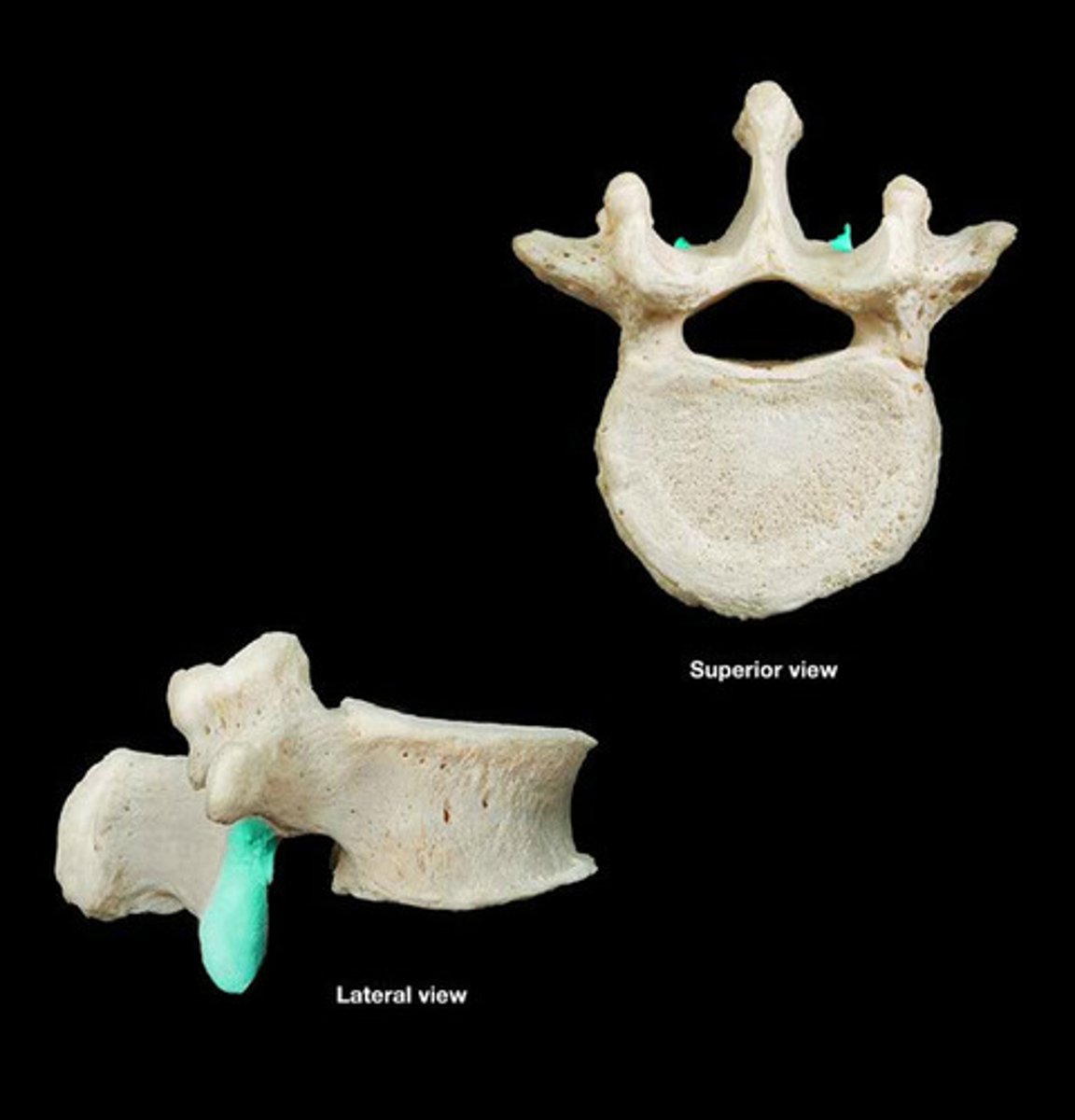
upper
Spinal rotation is named based upon the movement of the _____________ segment.
right
Which transverse process moves posterior with right rotation?
left
What way does the spinous process move with right rotation?
intervertebral foramen
opening located between adjacent vertebrae for exit of a spinal nerve
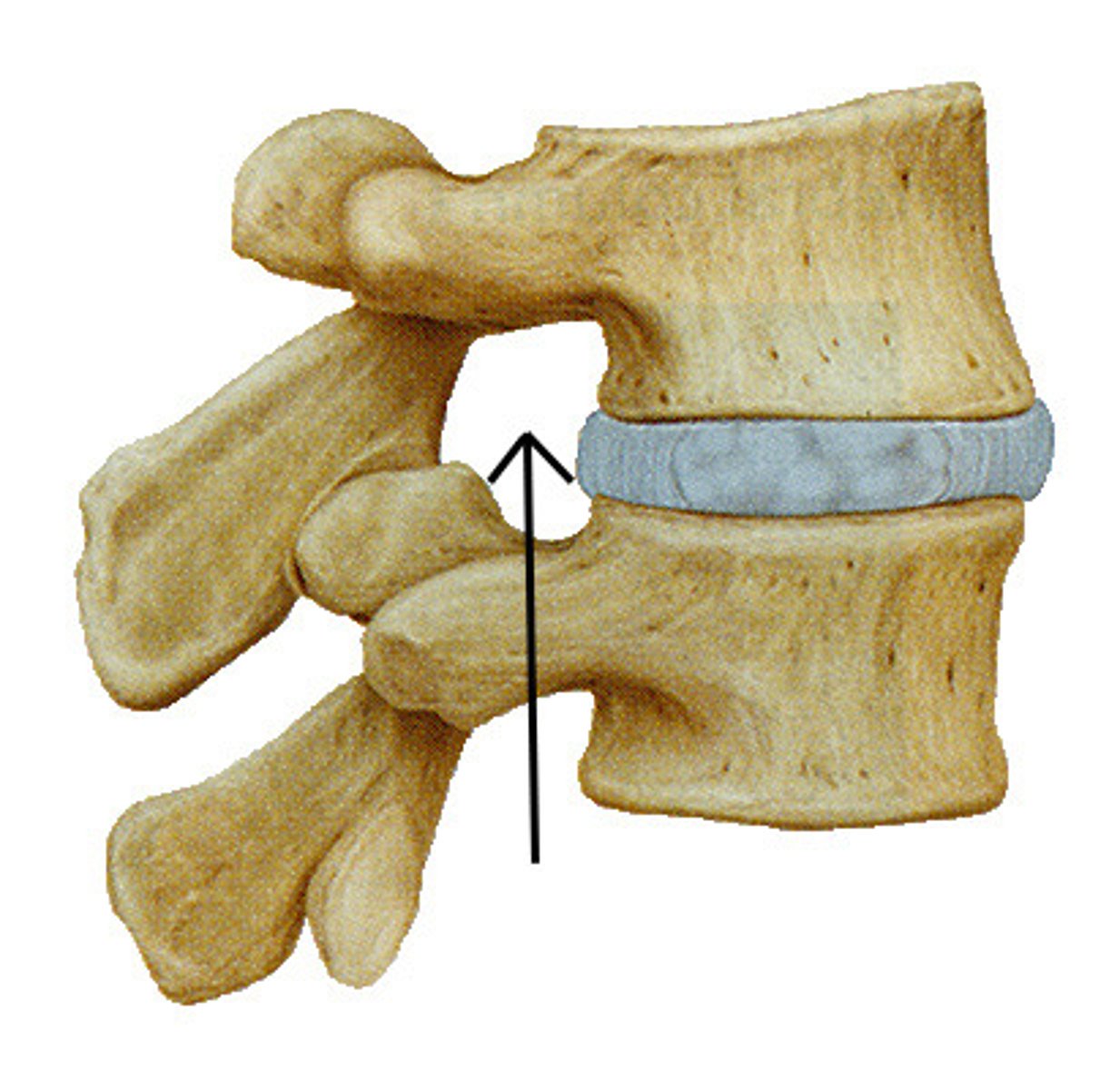
posteriorly
During FLEXION, the nuclear material is pushed _________________.
anteriorly
During EXTENSION, the nuclear material is pushed _________________.
tensile, compressive
During FLEXION, _____________ forces are created posteriorly, while __________________ forces are created anteriorly.
compressive, tensile
During EXTENSION, ___________________ forces are created posteriorly, while ____________ forces are created anteriorly.
open, tensile
During FLEXION, the IV foramen and facets ____________ which puts ______________ forces on the capsule.
close, compressive
During EXTENSION, the IV foramen and facets ____________ which puts ______________ forces on the capsule.
anterior longitudinal ligament
broad, connects anterior surfaces of adjacent vertebral bodies
*taut in extension, on slack w/ flexion

posterior longitudinal ligament
connects all the posterior surfaces of the vertebral bodies
*wider at disc, narrow at body
**only attaches at discs
***taut in flexion, slack extension

ligamentum flavum
connects the laminae of adjacent vertebrae
*thickest in lumbar spine
**always keeps tension and brings the lamina together (increase stability of disc)
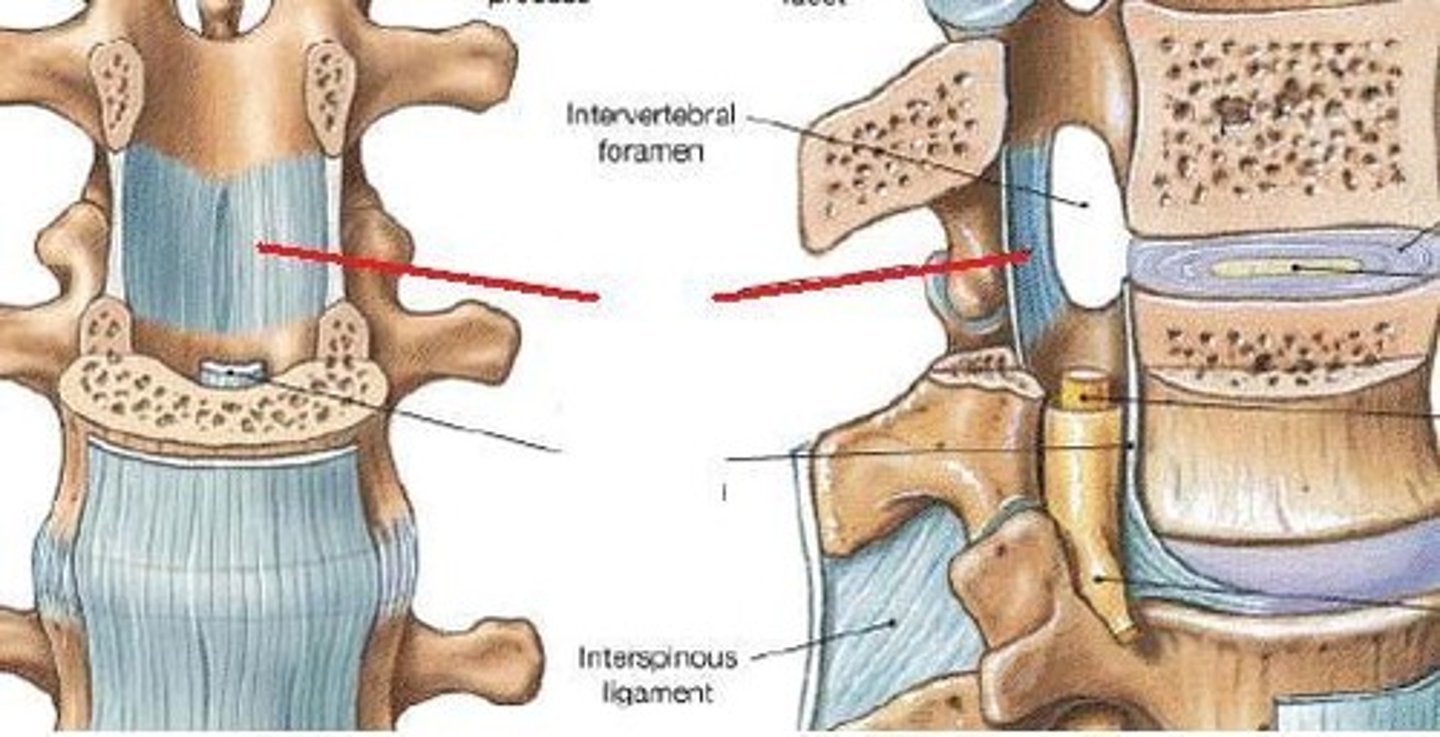
supraspinous ligament
connects tips of spinous processes
*1st ligament to fail in hyperflexion
**taut in flexion
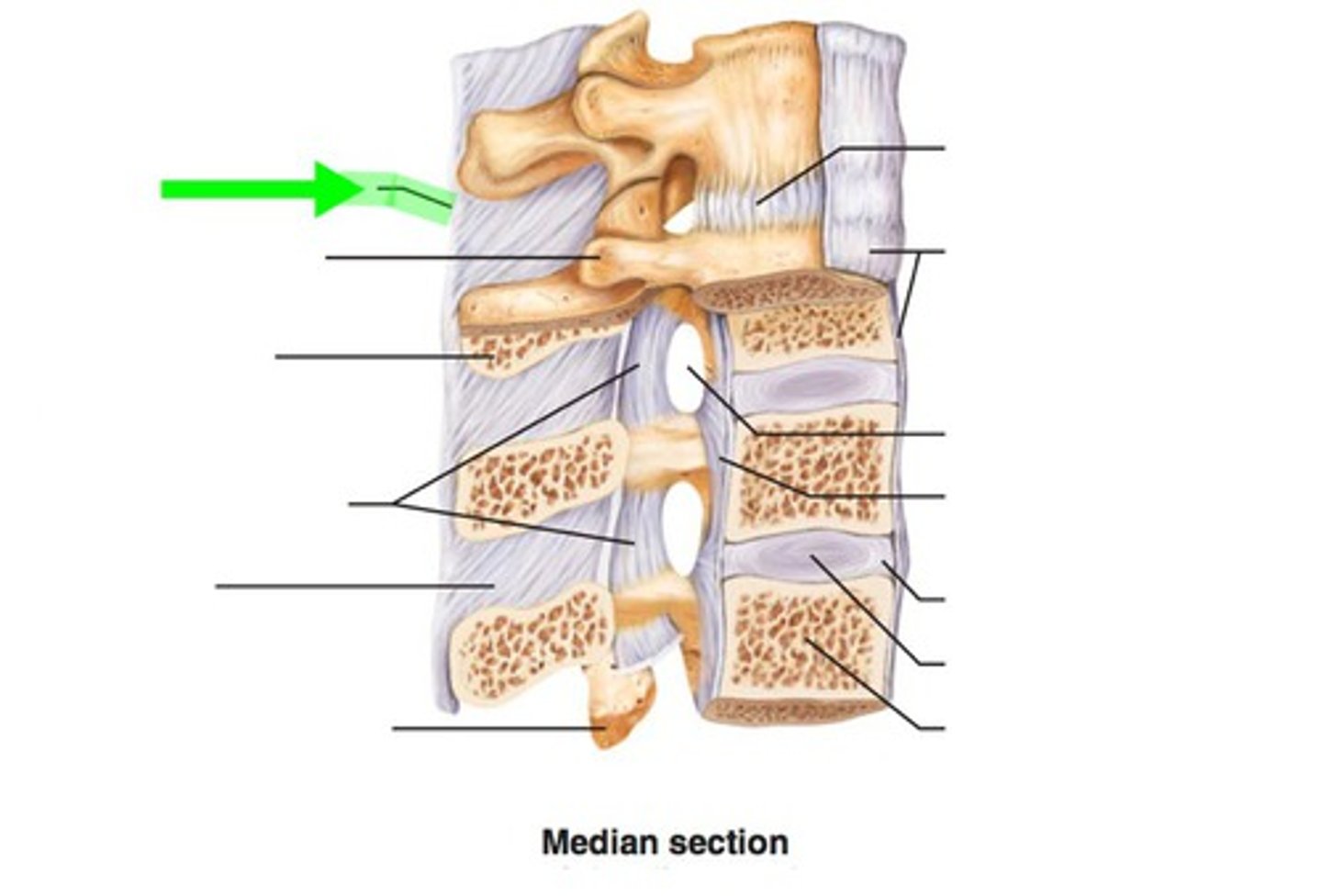
interspinous ligament
connects the spinous processes of adjacent vertebrae
*taut in flexion, slack extension
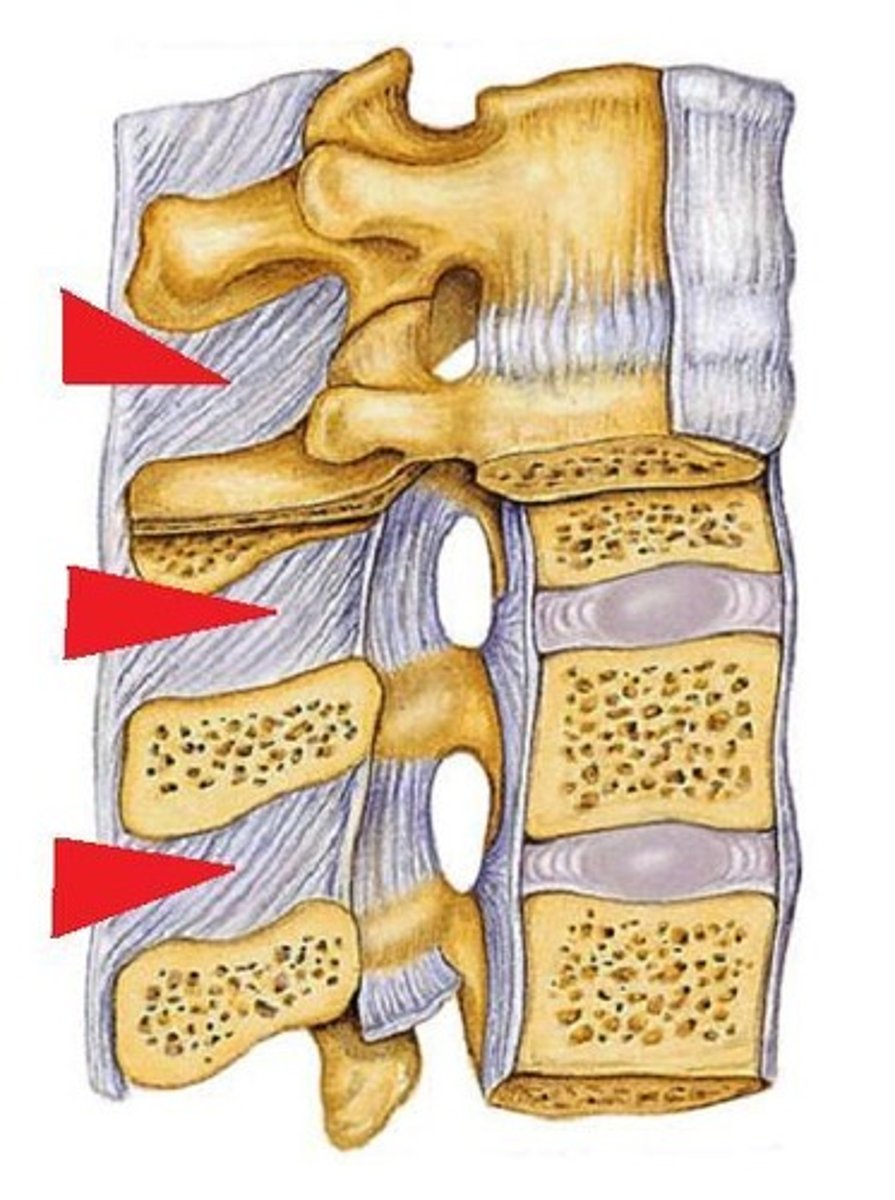
intertransverse ligament
connects adjacent transverse processes
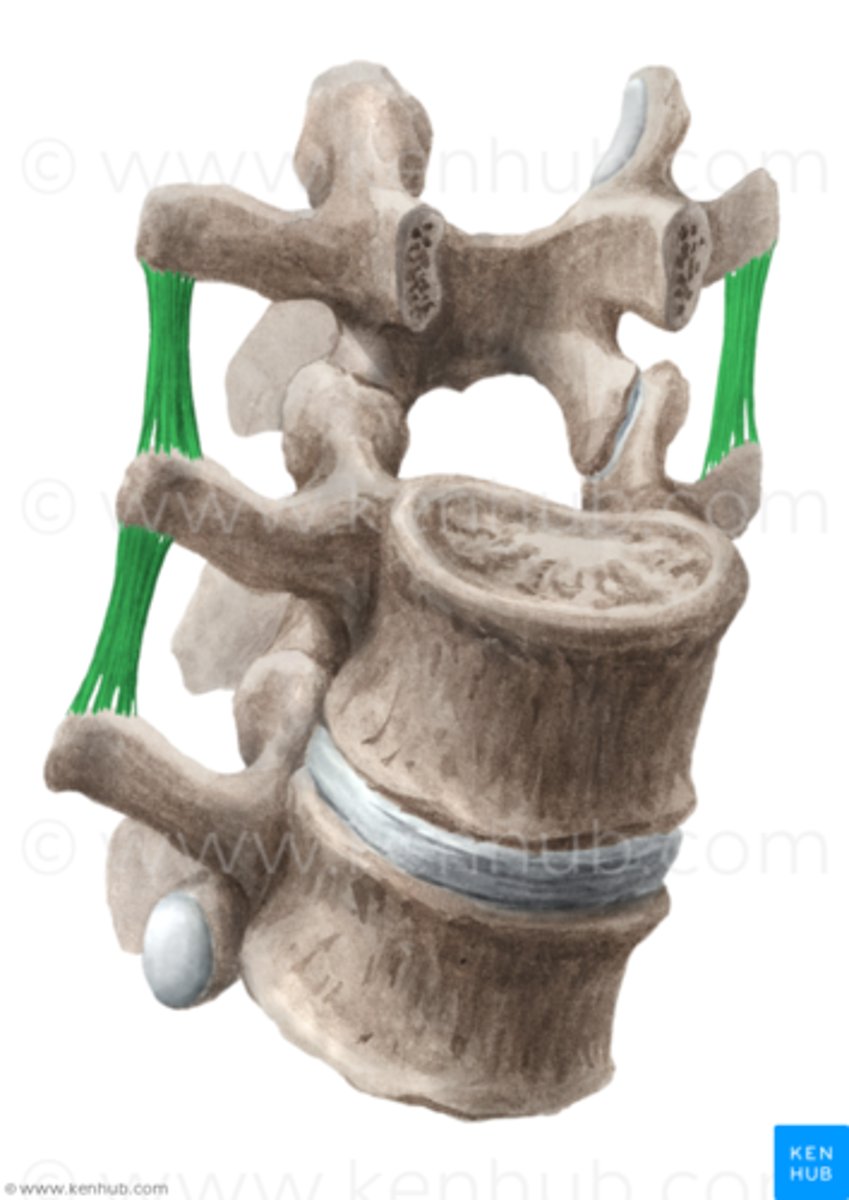
iliolumbar ligament
connects the transverse process of L5 with ilium
*originally a muscle
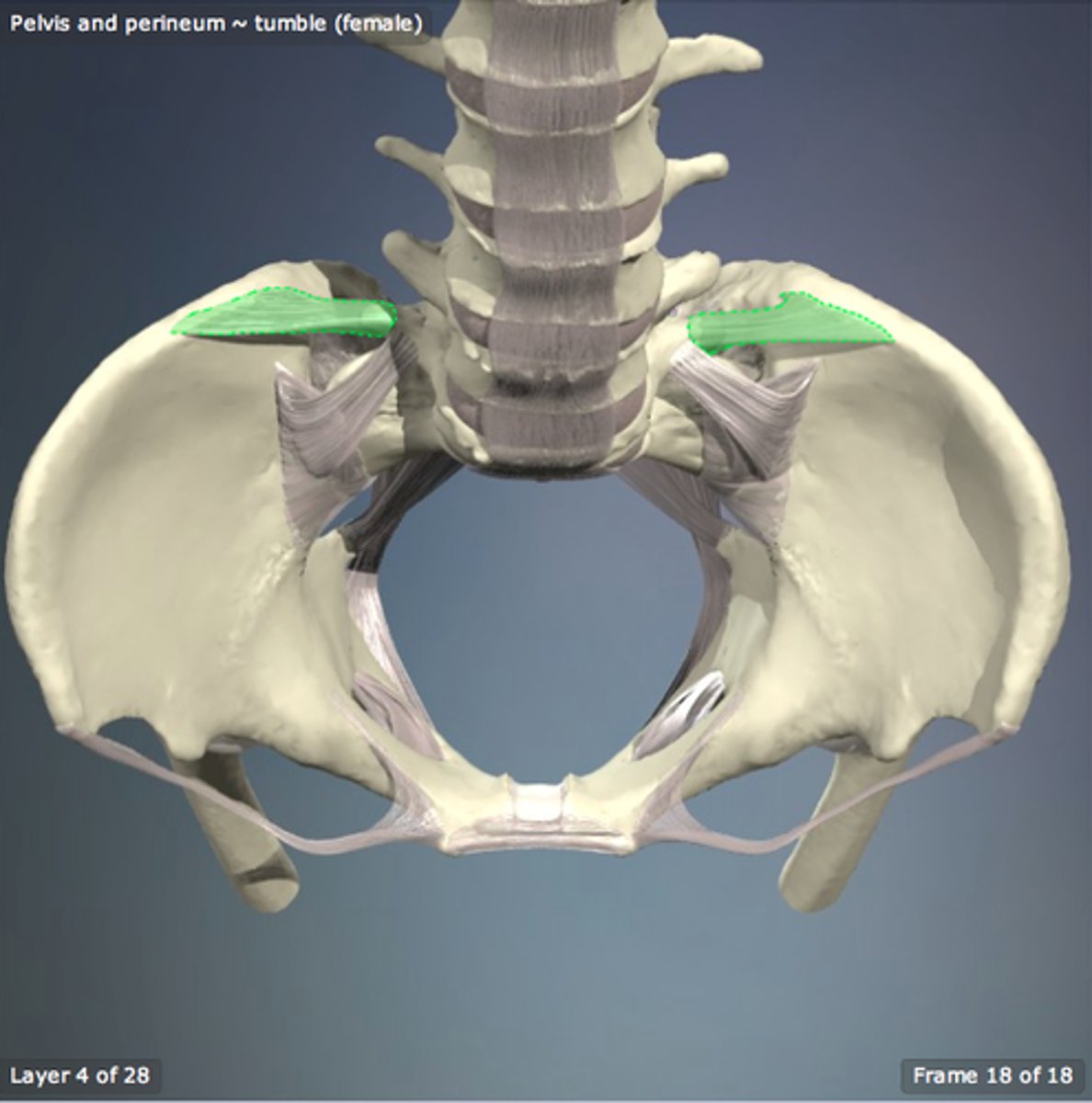
apical ligament
connects the apex of the dens to the anterior margin of the foramen magnum
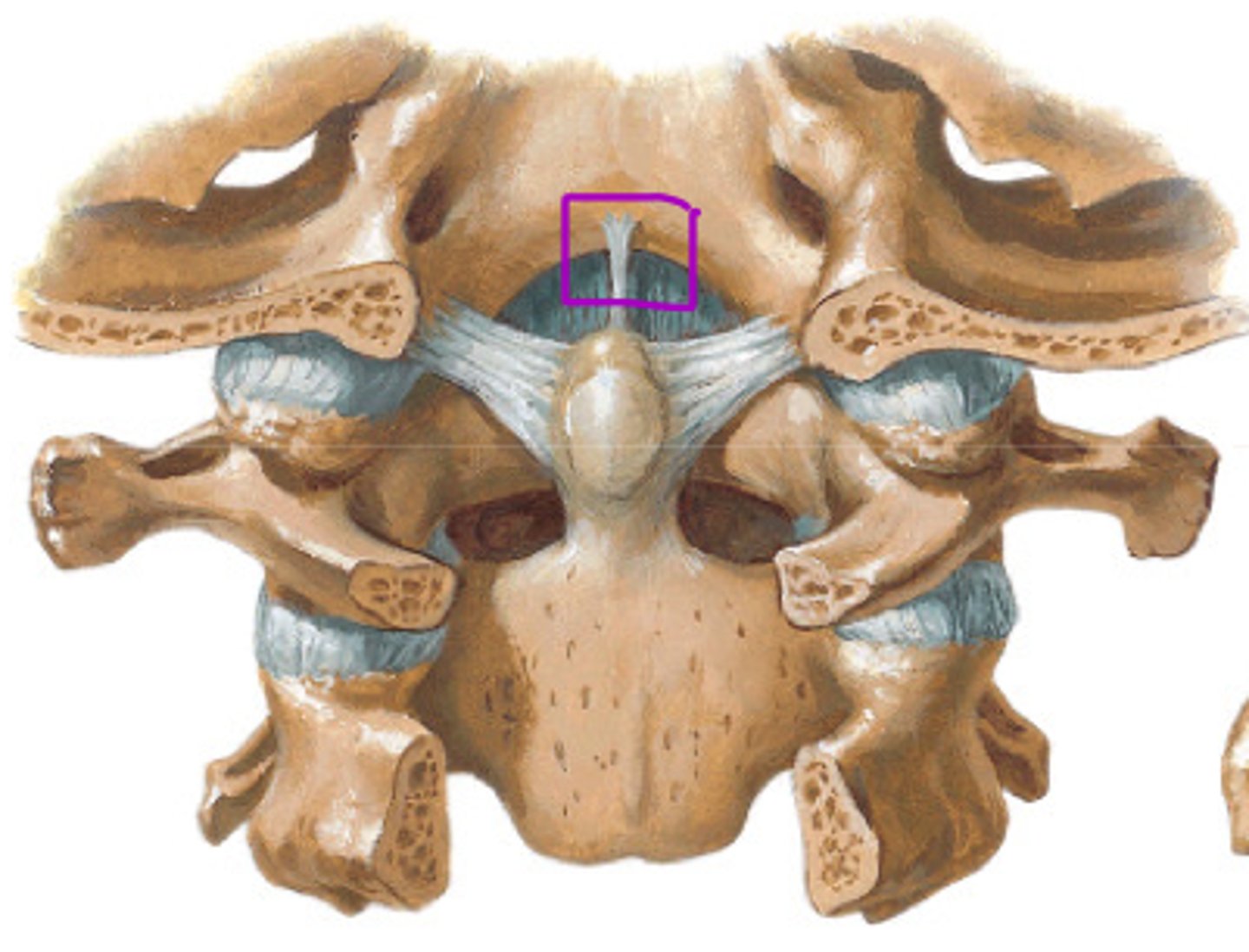
alar ligament
extends from sides of the dens to lateral margins of foramen magnum
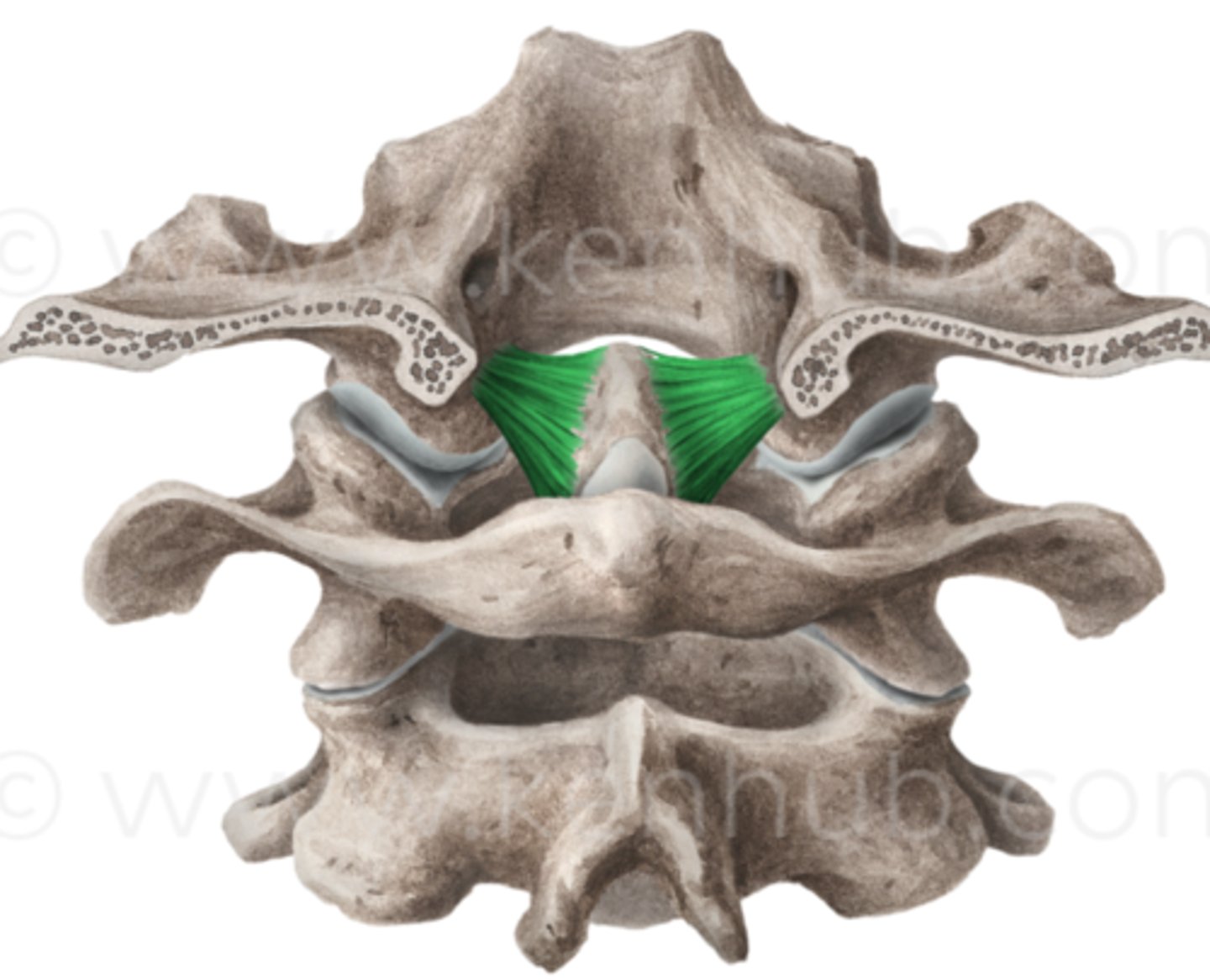
transverse ligament
attaches to the lateral masses of C1 to hold the dens in place

thoracic, lumbar
The facet joint capsule is strongest in which 2 regions?
after
Will the facet joint capsule fail before or after ligaments?
flexion
The facet joint capsule is vulnerable to excessive _______________.
neutral zone
area where no elastic deformation occurs
*nothing is stretched
instability
A large neutral zone means greater ___________________.
HINT: no tension is generated
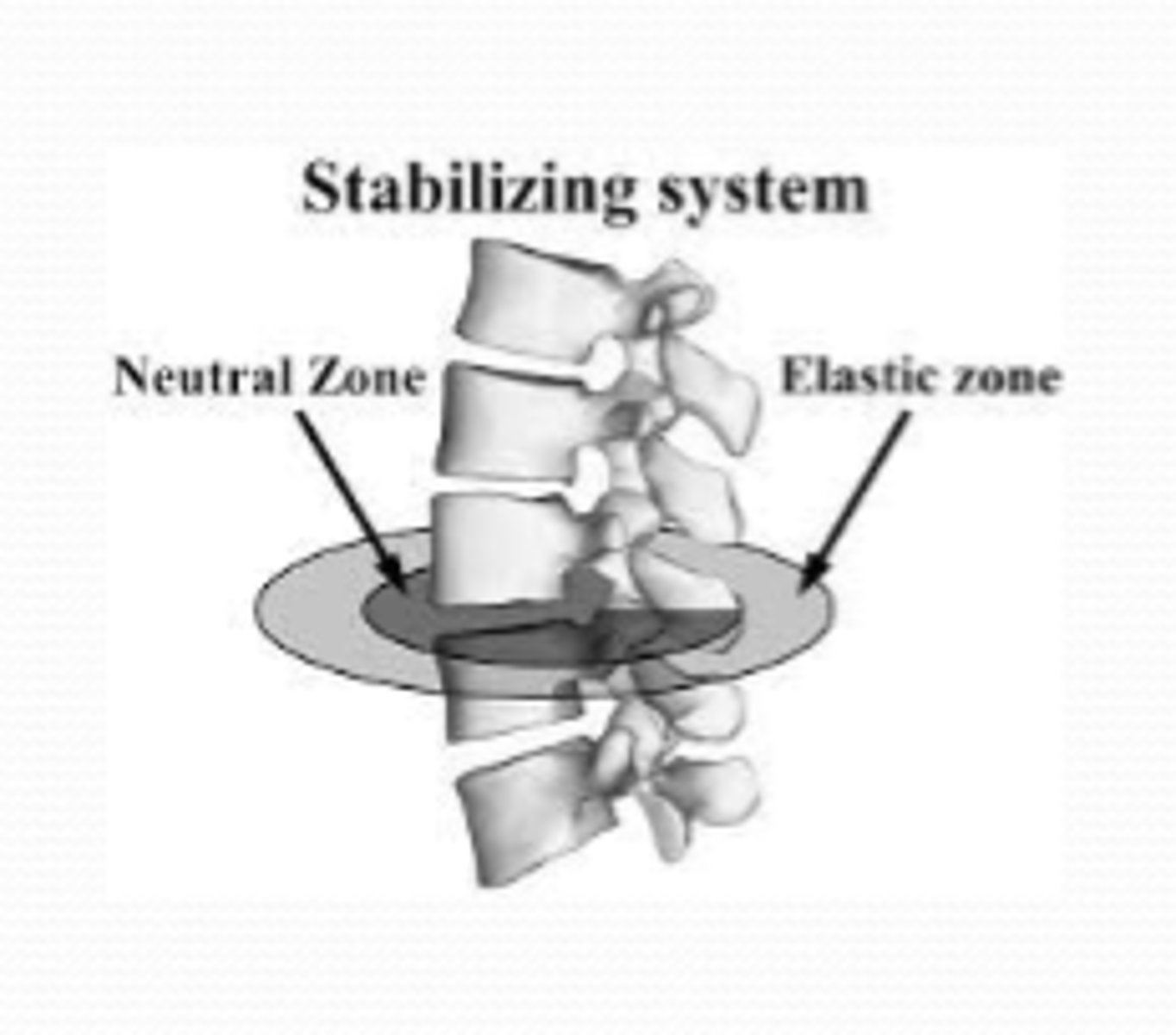
axial compression, bending, torsion, shear
What are the 4 types of segmental loading?
axial compression
TYPE OF SEGMENTAL LOADING
CAUSED BY:
1. gravity
2. ground reaction forces
3. muscle contraction
4. ligaments reaction to tensile forces
*intradiscal loads can range depending on position
**compression at the disc causes tension at the annulus, changing the angle of the fibers and increasing the stability
intradiscal pressure
pressure present between vertebral discs
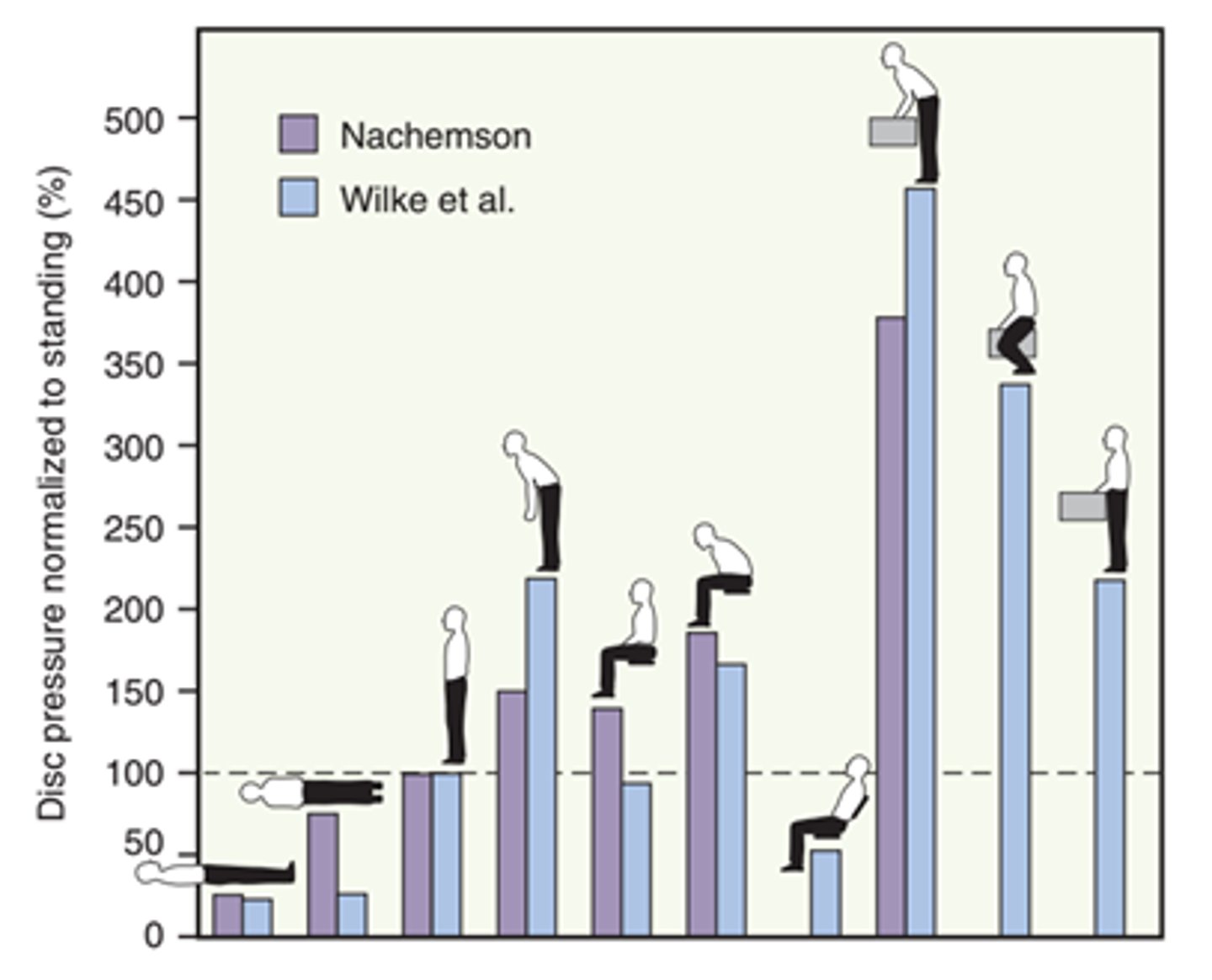
flexion of upper body while standing
What position results in the highest intradiscal pressures?
lying down (prone, supine)
What position(s) relieve intradiscal pressure?
bending
TYPE OF SEGMENTAL LOADING
combination of compression, shear and tensile forces on the segment from translation
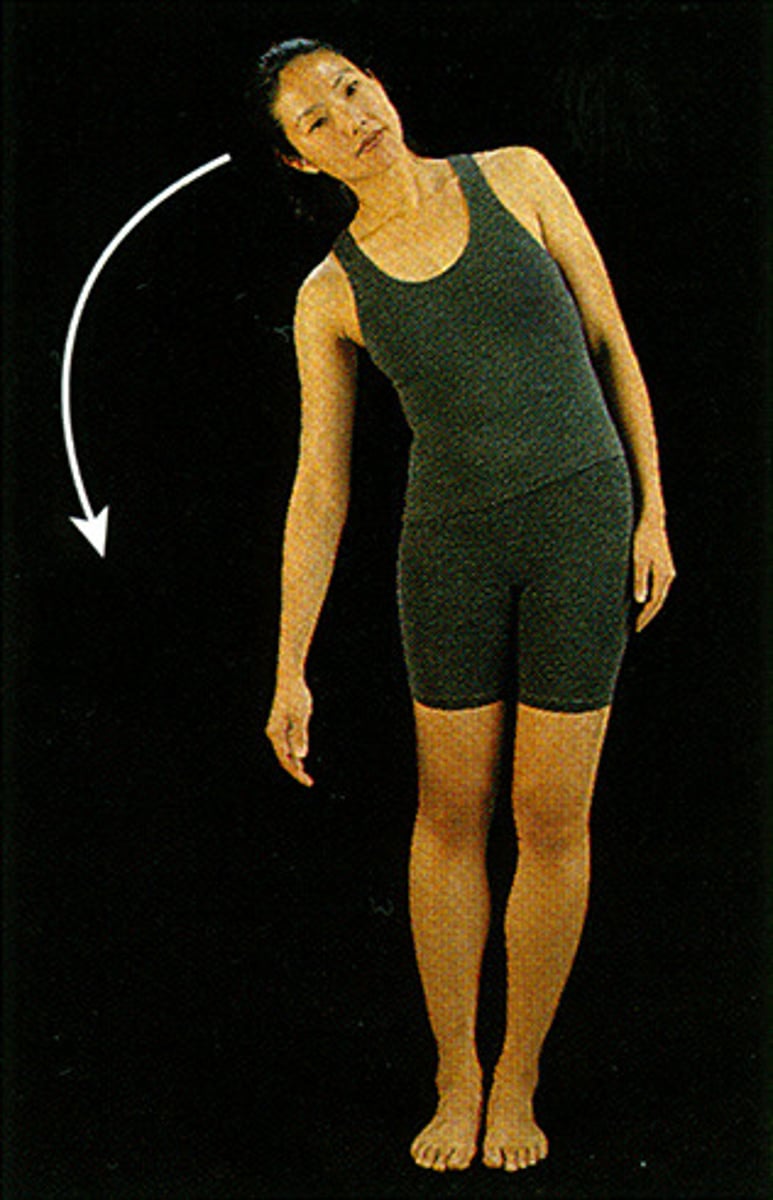
bending into flexion
resisted by posterior annulus, posterior longitudinal ligament, facet capsule (tensile) and anterior compressive forces on anterior structures
*causes disc displacement posteriorly
bending into extension
resisted by anterior portion of annulus, anterior longitudinal ligament (tensile), compressive load on facet and posterior compressive forces on posterior segment
*causing disc displacement anteriorly
torsion
TYPE OF SEGMENTAL LOADING
caused by axial rotation and coupled motions
*annulus fibrosus resists (1/2 CW, other 1/2 CCW) depending upon facet orientation
**resists in TENSILE manner
***flexion + rotation = injury (decrease force required for tissue failure)
shear
TYPE OF SEGMENTAL LOADING
facet joint resists ____________ especially in the lumbar area (lordosis)
*annulus will experience some of these forces depending upon direction and the fiber orientation or angle
spinal flexion
superior vertebra will anterior tilt and forward glide
*intervertebral foramina widens
**compressive forces on anterior aspect of disc, tensile forces posterior
***central canal widened

flexion exercises
What type of exercises should a patient with a nerve root injury be performing?
HINT: widens intervertebral foramen
spinal stenosis
narrowing of the spinal canal with compression of nerve roots
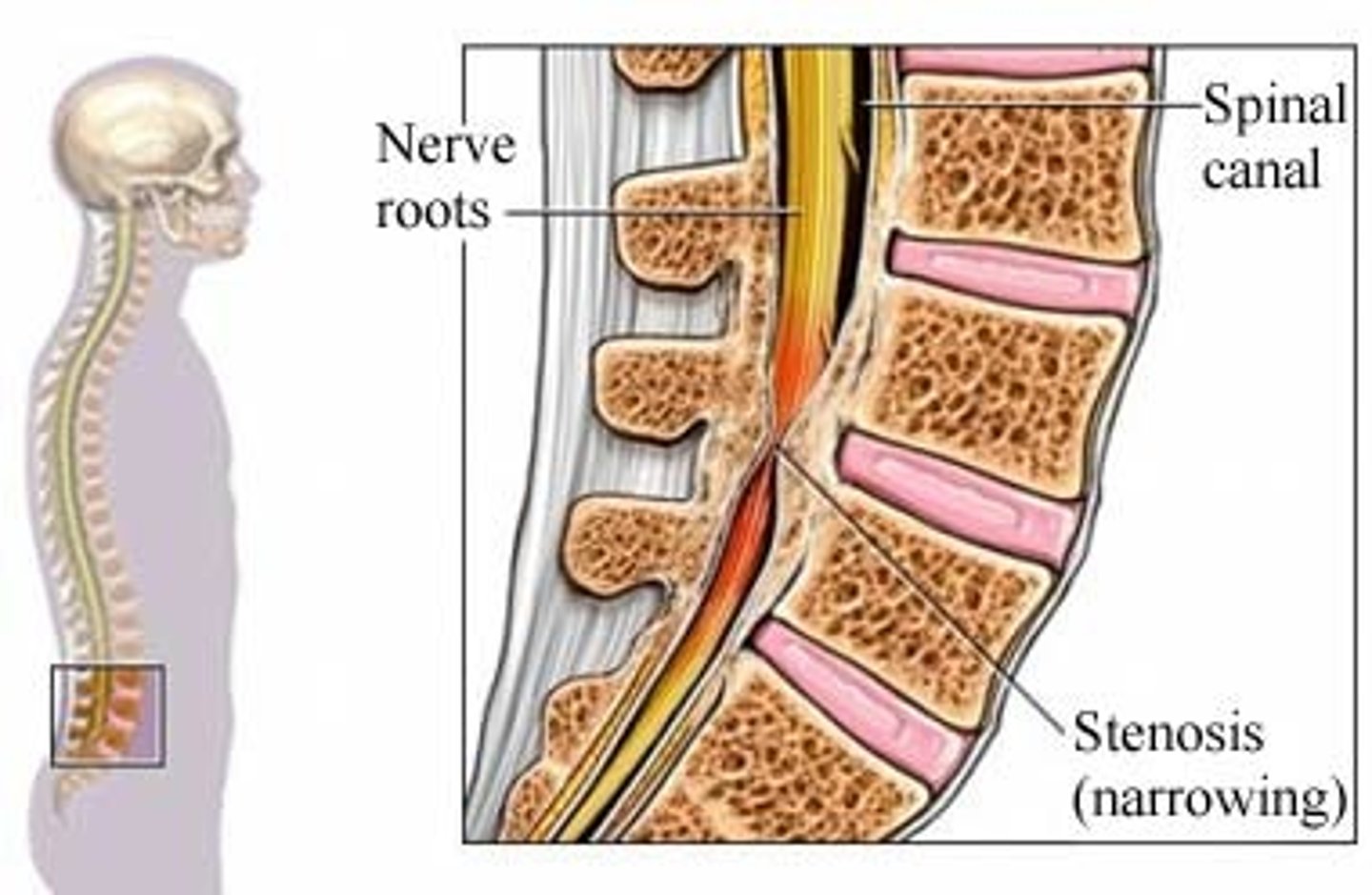
spinal extension
superior vertebrae will tilt and glide posteriorly
*intervertebral foramina narrows
**central canal narrows
***nucleus pulposus moves anteriorly (rationale for McKenzie Extension exercises)
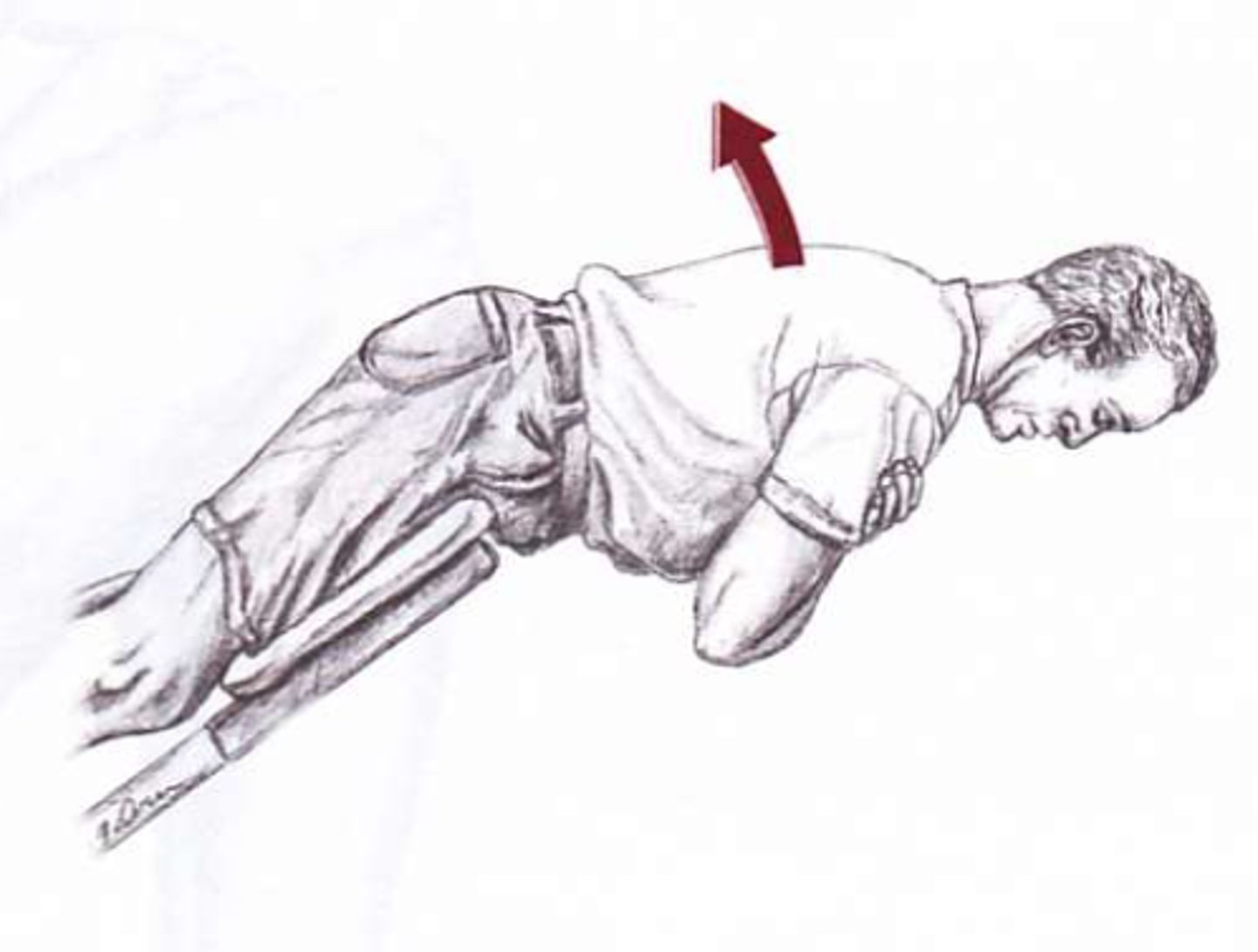
McKenzie Extension exercises
help centralize a posterior bulging disc
*relieves disc pain by shifting nucleus pulposus anteriorly

spinal lateral flexion
superior vertebra will translate (tilt and rotate over inferior)
*concavity towards, convexity opposite
*tensile forces on convexity, compressive forces on concavity
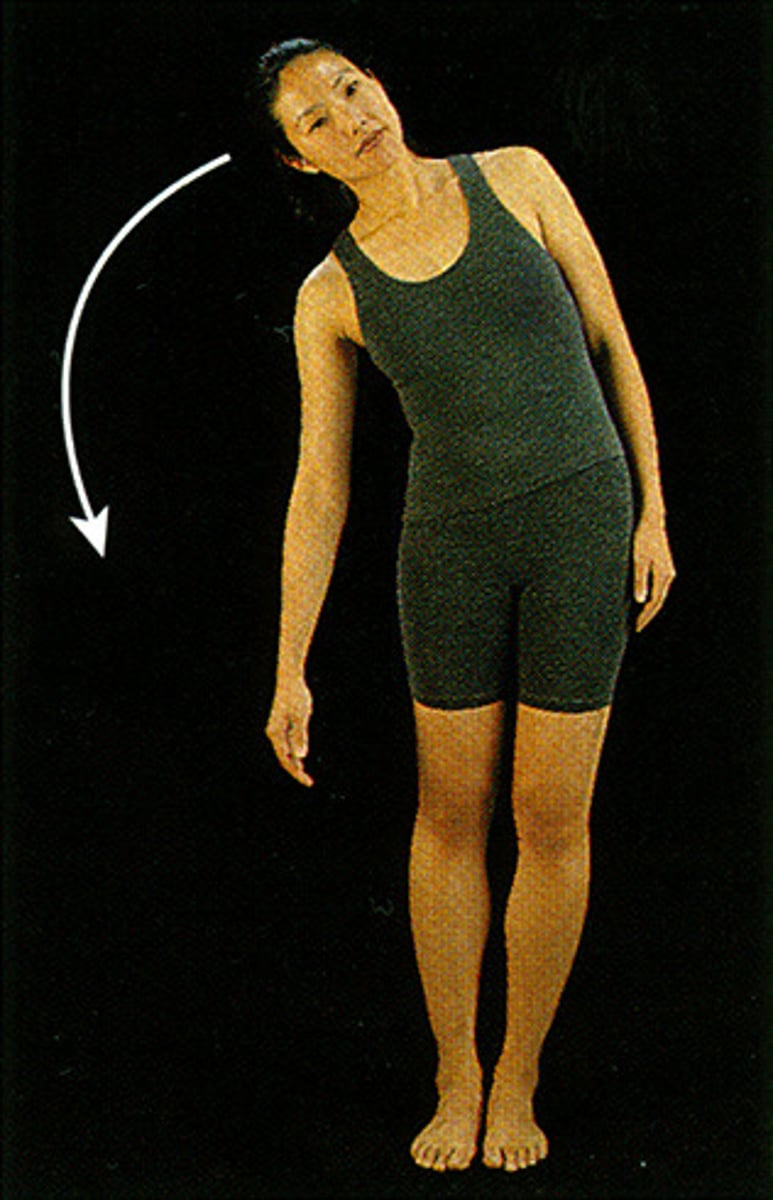
coupling motion
relationship of lateral flexion and rotation
*varies depending upon the facet orientation
ex. C2-C7 = rotation and lateral flexion to SAME SIDE
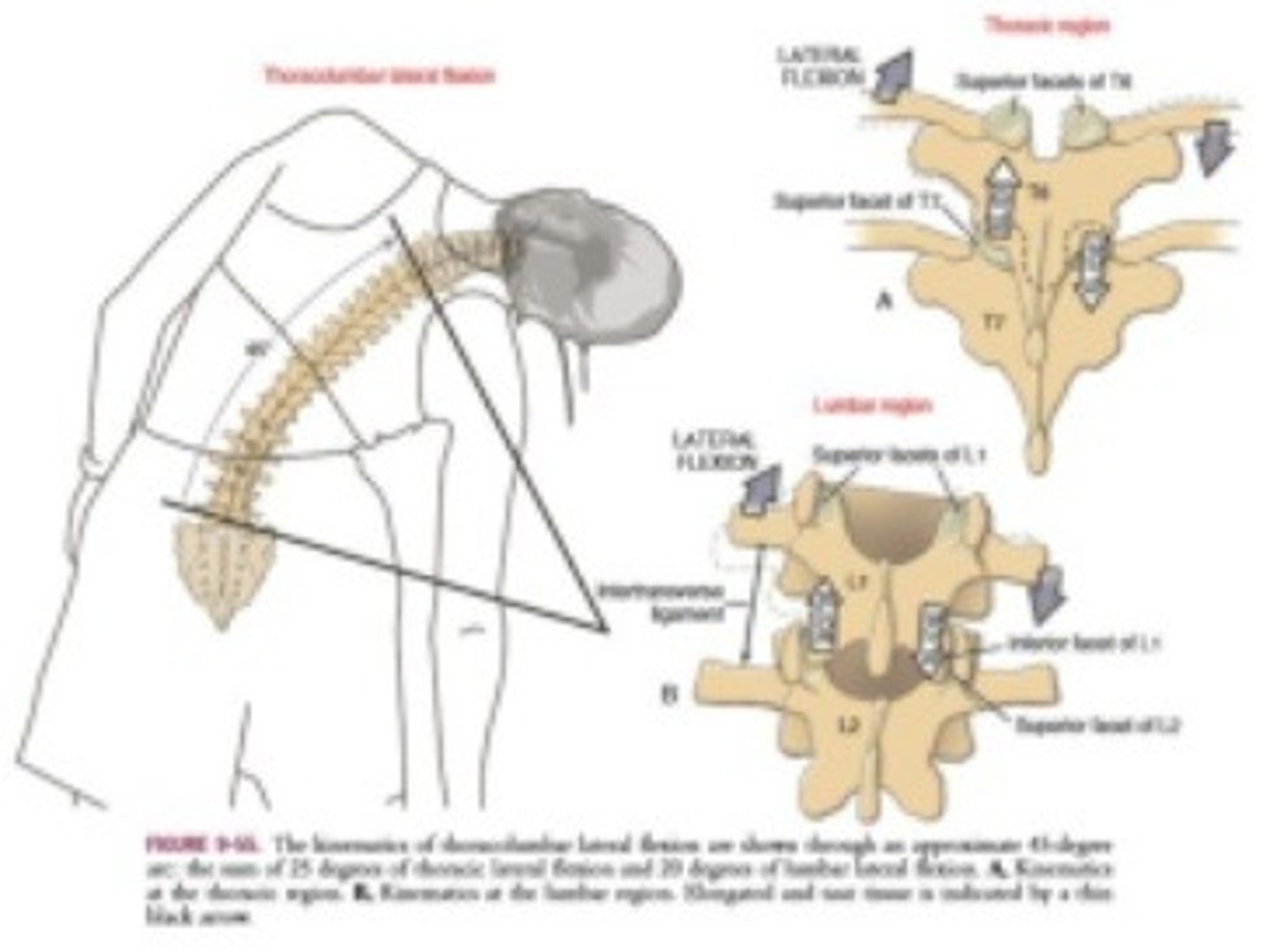
opposite
In a neutral lumbar spine, rotation and sidebend are coupled in ________________ directions.
spinal rotation
rotary movement of spine in horizontal plane
*accessory motions are lateral flexion due to same coupling in cervical and upper thoracic spine
**exception with lower T & L in neutral coupling then opposite
***motion segment is flexed or extended spine the couple will be the same
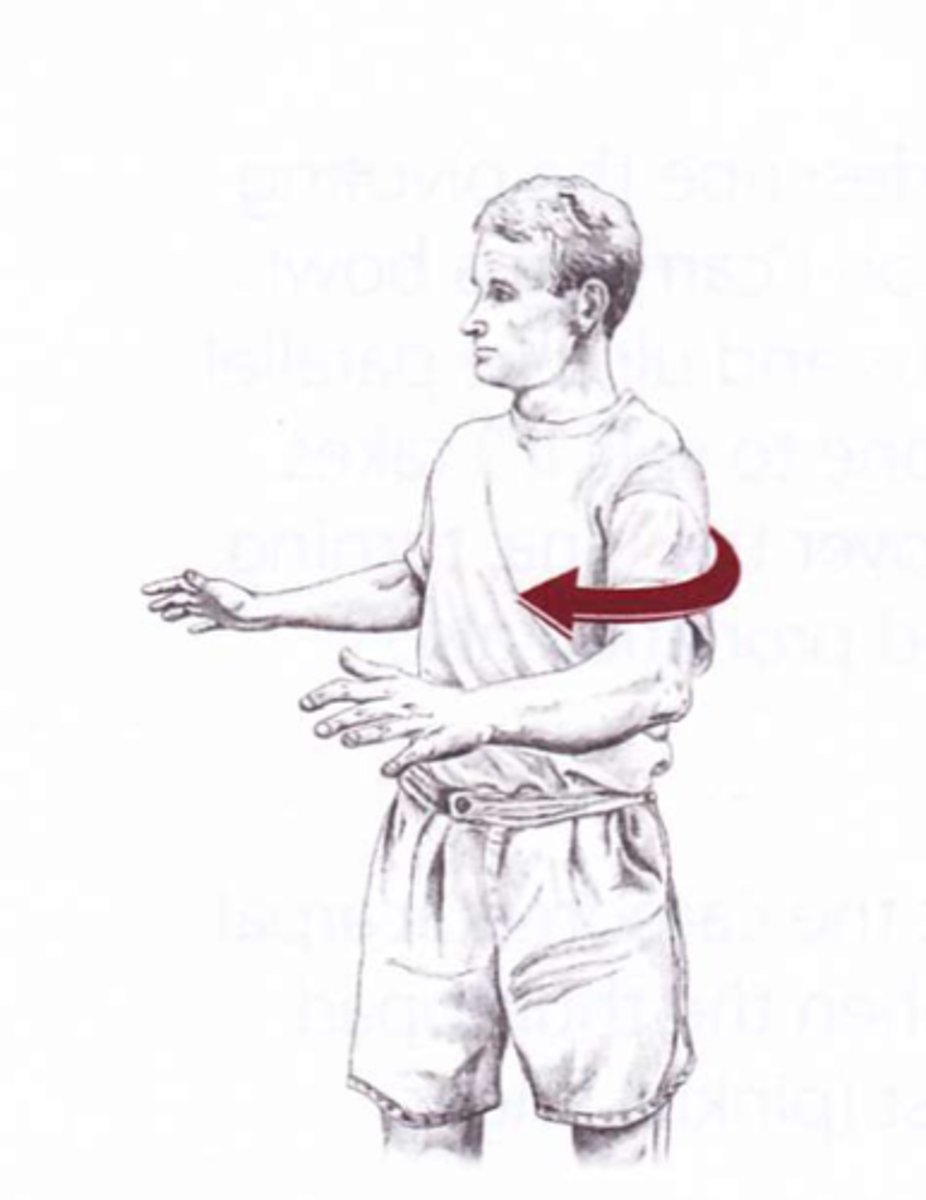
7, 8
There are ___ cervical vertebrae and ___ cervical nerve roots.
dermatome
area of skin supplied by a single nerve root
*can be affected by compression at the spine

full extension
What is the closed pack position for the cervical spine?
HINT: increases stability to protect vertebral artery and spinal cord
flexion
What is the open pack position for the cervical spine?
HINT: large neutral zone (increases mobility b/c no tension)
O-A joint mobility
flexion/extension or nodding and minimal lateral flexion/rotation
(convex occiput on concave C1)
flexion--> roll anterior, glide posterior
extension--> roll posterior, glide anterior
*rotation and lateral flexion segmentally occurs to the OPPOSITE side
A-A joint mobility
primary motion is rotation
*transverse ligament helps control C1 on C2 anterior displacement
**allows nodding
can account for 50% of rotation in the neck and most of the initial ROM
(fully flex chin to chest, then rotate to assess this joint)
C3-C7 mobility
flexion--> glide anterior/superior
extension--> glide posterior/inferior
*side bending and rotation occurs to the SAME side
**facet orientation allows for motion in all planes and more rotation and lateral flexion than other regions
FRSL
R facet "stuck open"
LIMITED:
1. extension
2. R side bending
3. R rotation
FRSR
L facet "stuck open"
LIMITED:
1. extension
2. L side bending
3. L rotation
ERSL
L facet "stuck closed"
LIMITED:
1. flexion
2. R side bending
3. R rotation
ERSR
R facet "stuck closed"
LIMITED:
1. flexion
2. L side bending
3. L rotation
thoracic spine
STABILITY:
1. decreased movement due to length of spinous processes
2. ribcage provides stability
3. increasing load bearing
MOBILITY:
three degrees of freedom of motion
*lateral flexion the greatest
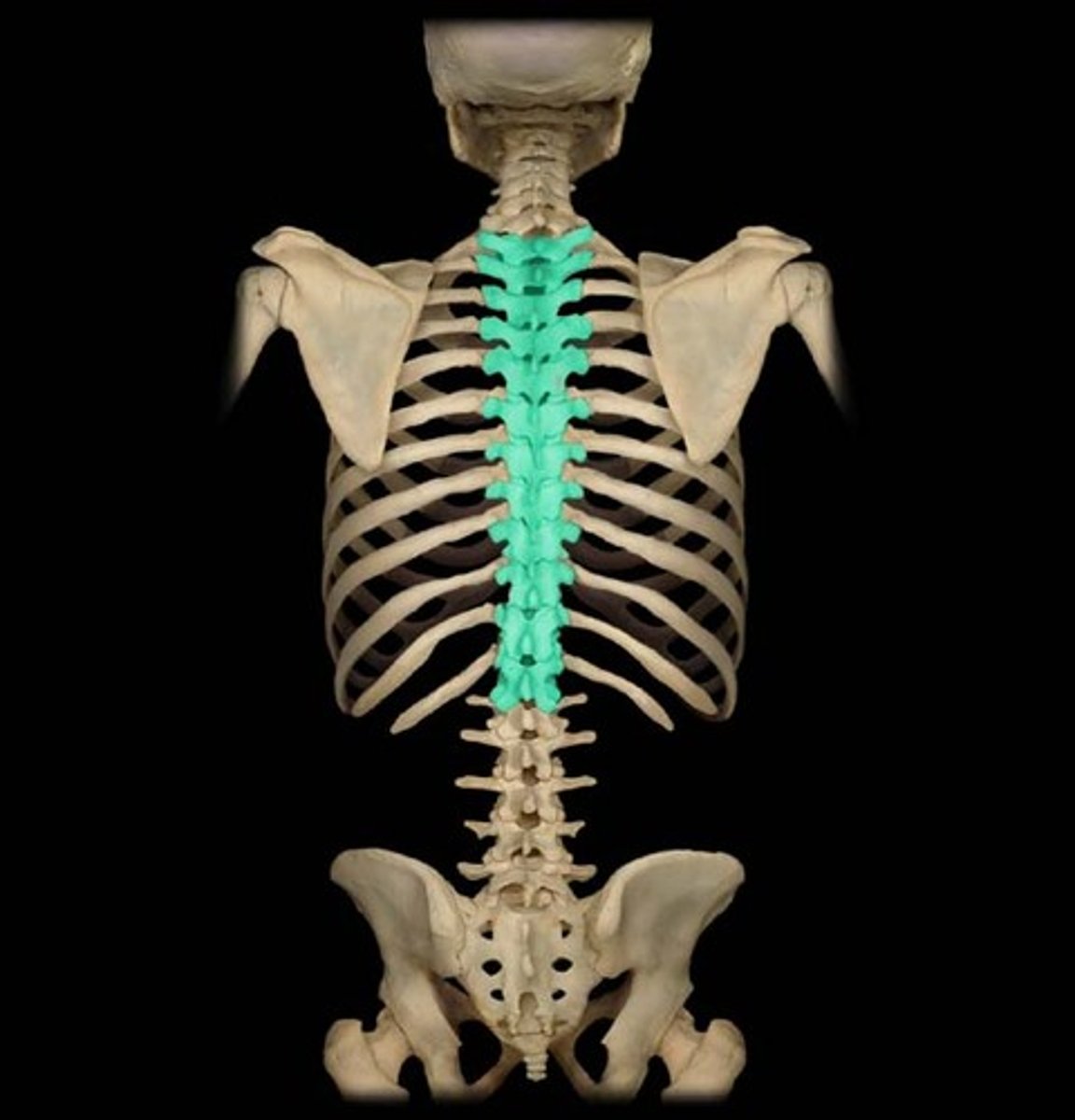
flexible
The thoracic spine is less ______________ due to rib articulation, smaller disc to body ratio, and longer SPs.
*flavum and ALL are thicker and facet capsule less flexible
Geelhoed's rule
the TPs of each thoracic vertebrae are generally at the level of the SP of the vertebra 1 level above throughout thoracic spine
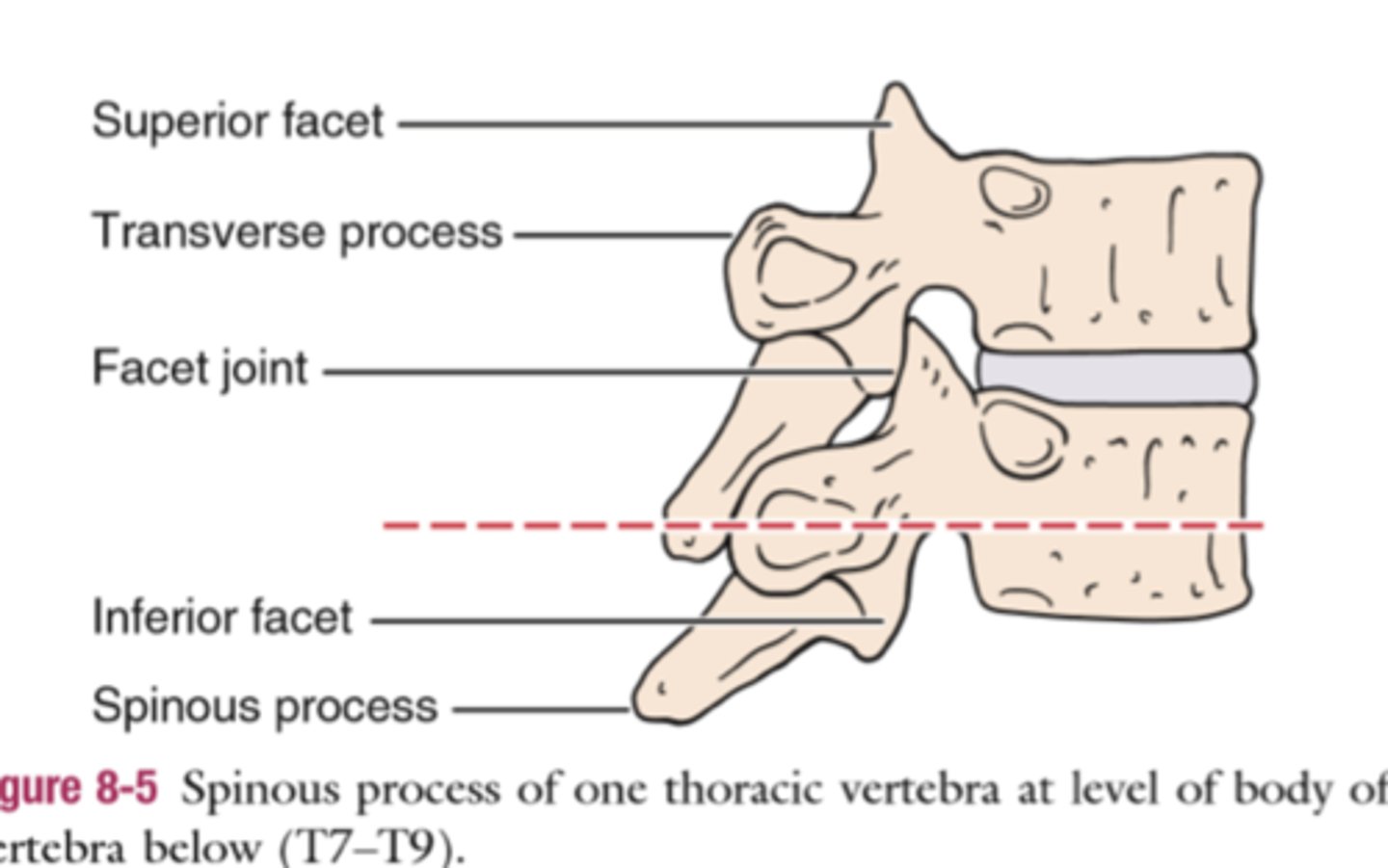
costotransverse, costovertebral
What are the 2 articulations of the ribs?
costotransverse joint
tubercle of rib articulates with transverse process
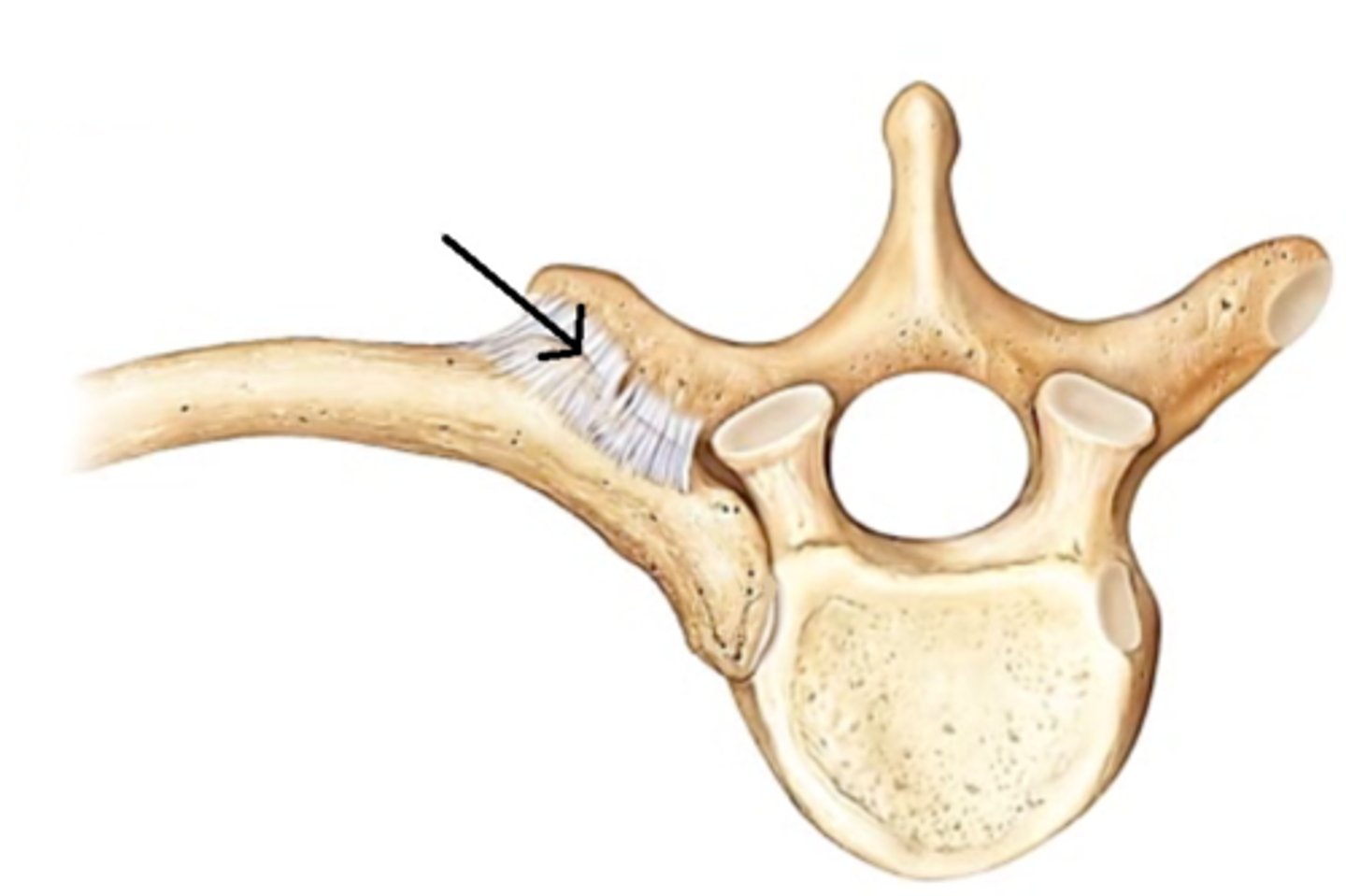
costovertebral joint
head of rib articulates with demifacet on vertebral body
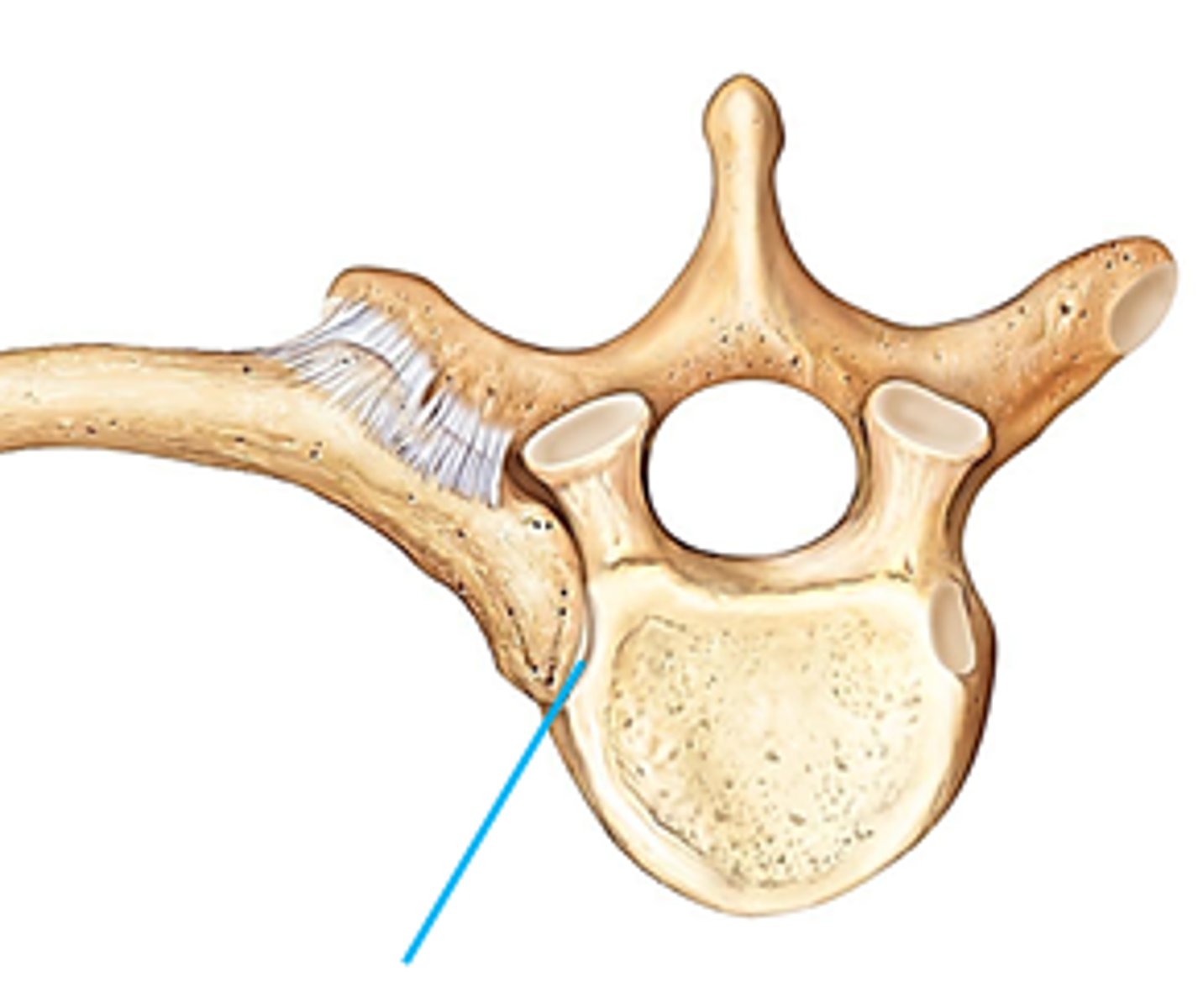
extension, contralateral lateral flexion
What 2 motions cause the ribs to separate?
flexion, ipsilateral lateral flexion
What 2 motions compress the ribs?
HINT: may affect ventilation